Facelift in NYC: Why Fall Is the Perfect Time to Refresh Your Look
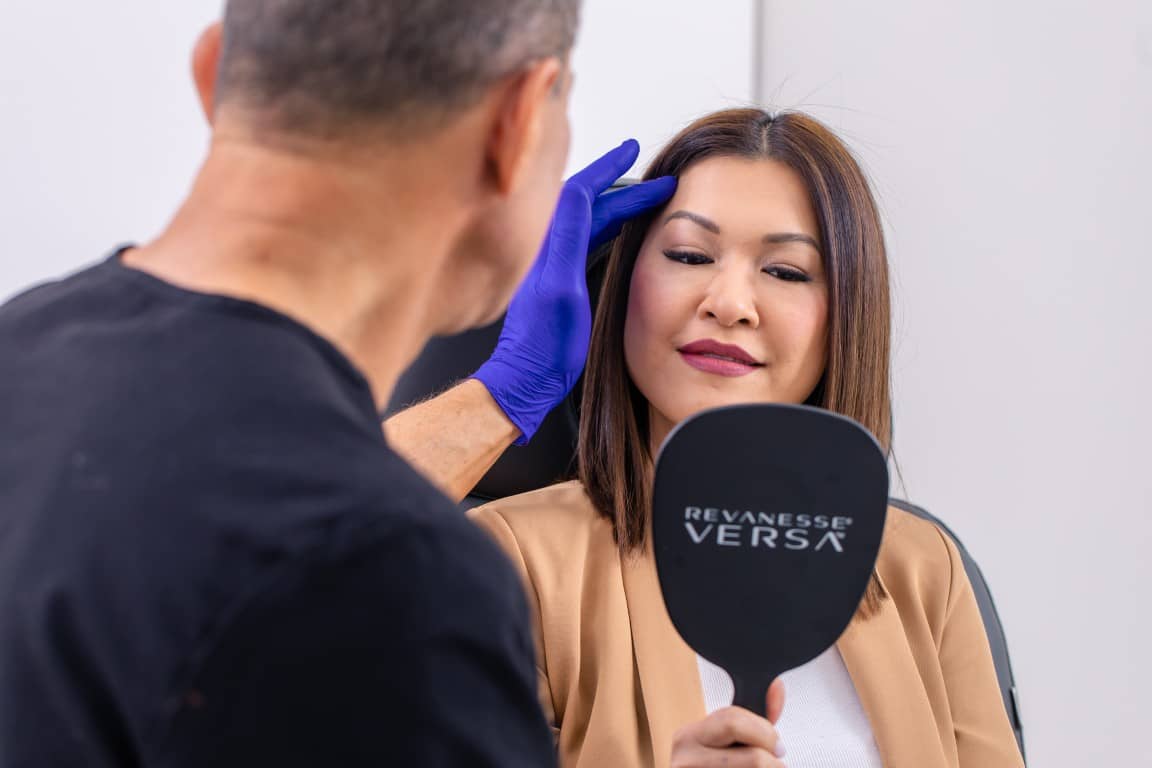
As autumn arrives in New York City, many patients discover that fall represents the ideal season for facelift surgery. Cooler weather, longer sleeves, and extended indoor time create perfect conditions for recovery while preparing for a refreshed appearance that will carry you confidently through the holidays and into the new year.
Philip J. Miller, MD, FACS, one of Manhattan’s leading facial plastic surgeons, helps patients understand why fall timing offers unique advantages for achieving natural facelift results. With over 20 years of experience exclusively focusing on the face, Dr. Miller’s expertise in facelift procedures and his proprietary NatraLook® process ensure patients receive personalized care that aligns with their lifestyle and aesthetic goals.
Understanding Your Facelift Options in New York
When considering a facelift, New York City patients have access to several advanced approaches, each designed to address different concerns and recovery timelines:
The MicroLift-Face: Minimally Invasive Excellence
For busy New Yorkers who want significant results without extensive downtime, the MicroLift-Face represents an ideal solution. This minimally invasive procedure mimics the lifted appearance of wearing your hair in a ponytail, addressing the upper two-thirds of the face through a single incision behind the ear.
The MicroLift-Face offers several advantages for fall timing:
- Procedure completed in under one hour using local anesthesia
- Recovery time of just a few days versus weeks
- Return to normal activities within days rather than weeks
- Perfect for professionals with demanding schedules
Traditional Facelift: Full-Face Rejuvenation
For patients seeking more dramatic transformation, traditional facelift surgery provides comprehensive results by addressing sagging skin, jowls, deep wrinkles, and volume loss throughout the face and neck. Dr. Miller’s technique focuses on repositioning deeper tissues rather than simply pulling skin tight, creating natural-looking results that enhance rather than alter your facial features.
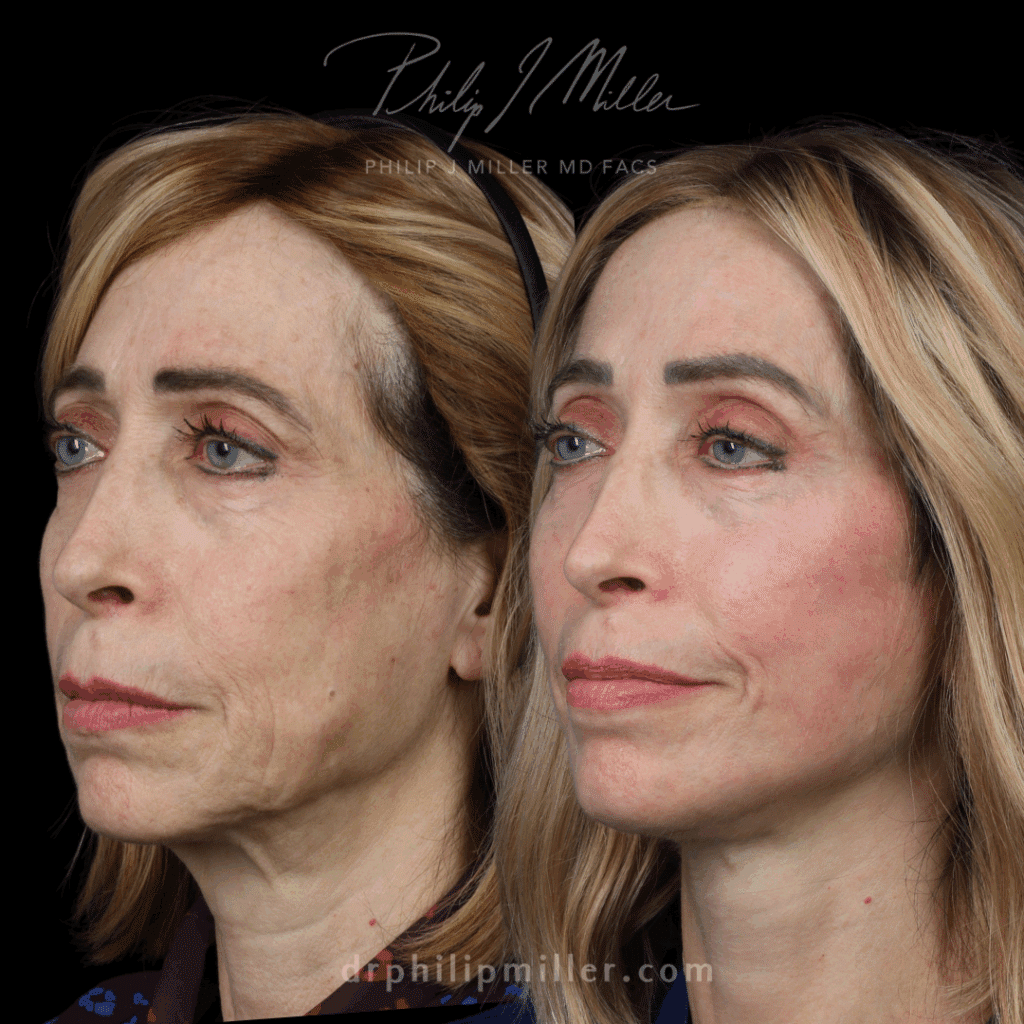
Deep Plane Facelift: Comprehensive Anti-Aging Solution
The deep plane facelift targets more advanced signs of aging—sagging cheeks, jowls, and neck laxity. By lifting the skin and repositioning deeper tissues (the SMAS layer), Dr. Miller achieves natural-looking contour and longer-lasting results.. The fall season offers the perfect opportunity to undergo this transformative surgery, with cooler weather and indoor living creating ideal conditions for a comfortable recovery and a refreshed appearance by the holiday season.
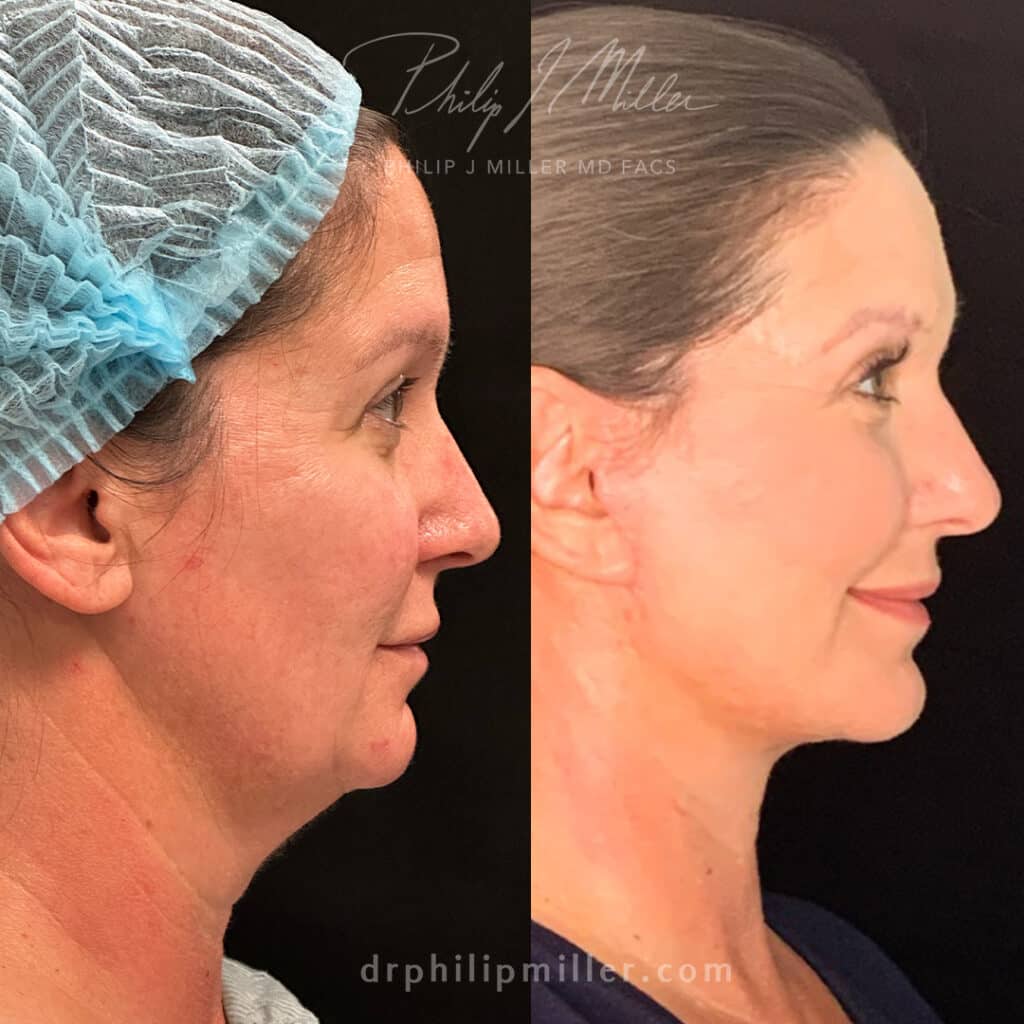
Why Fall Timing Offers Unique Advantages
Optimal Recovery Weather
New York’s fall weather provides ideal conditions for facelift recovery. Cooler temperatures reduce heat-related swelling that can complicate healing during summer months. The comfortable autumn climate allows patients to stay indoors comfortably during initial recovery without feeling confined by extreme weather.
Additionally, fall’s lower humidity levels help minimize post-surgical swelling, while the reduced UV exposure protects healing skin from harmful sun damage that could compromise results or cause hyperpigmentation.
Professional Scheduling Benefits
Many professionals find fall scheduling offers distinct advantages. The period between Labor Day and Thanksgiving often provides more predictable work schedules compared to summer vacation season or year-end deadlines. This stability allows for better surgical planning and recovery time without conflicting with major professional obligations.
Fall timing also means completing your healing before holiday social gatherings, ensuring you feel confident and refreshed for important year-end events and celebrations.
Lifestyle Compatibility
Autumn’s indoor-focused lifestyle naturally supports facelift recovery requirements. Cooler weather encourages staying indoors during critical healing phases, while seasonal wardrobes with higher necklines and scarves provide natural camouflage for any residual swelling or bruising.
The season’s emphasis on comfort foods and cozy environments aligns perfectly with recovery needs, making the healing process more enjoyable and less disruptive to your normal routine.
Recovery Considerations for Fall Facelift
Traditional Facelift Recovery Timeline
Understanding the recovery process helps patients plan effectively for fall procedures:
First Week:
- Expect bruising and swelling for up to two weeks
- Sleep with head elevated to minimize swelling
- Avoid strenuous activities and protect the face
- Take prescribed pain medication as needed
- Follow-up visits for bandage and stitch removal
Weeks 2-3:
- Most patients can return to regular activities within two weeks
- Visible bruising and swelling begin to subside significantly
- Resume light social activities and office work
- Continue protecting incision sites
Weeks 3-4:
- Resume cardiovascular exercises like walking after two weeks
- Progress to more strenuous workouts 3-4 weeks after surgery
- Most visible healing should be complete
- Continue following post-operative care instructions
MicroLift Face Recovery Advantages
The MicroLift Face offers significantly faster recovery:
- Return home the same afternoon as surgery
- Resume normal activities within days (minimal downtime required)
- Suture removal typically occurs within a few days
- About one week of downtime total
- Minimal disruption to daily routines
This accelerated timeline makes the MicroLift Face particularly appealing for fall scheduling, allowing patients to be fully recovered before holiday season begins.
The Importance of Choosing the Best Facelift Surgeon NYC
Selecting an experienced, board-certified facial plastic surgeon is crucial for achieving optimal results. Dr. Miller’s qualifications include:
- Double board certification in facial plastic surgery
- Over 20 years focusing exclusively on facial procedures
- Recognition as a Castle Connolly Top Doctor for over a decade
- More than 5,000 successful facial surgeries completed
- Expertise in both surgical and non-surgical facelift techniques
His NatraLook® process ensures each patient receives personalized care that considers individual anatomy, aesthetic goals, and lifestyle requirements.
Planning Your Fall Facelift Timeline
Traditional Facelift Planning
For comprehensive facelift surgery, ideal timing involves:
- Schedule consultation 4-6 weeks before desired surgery date
- Plan procedure for September through November
- Allow 2-3 weeks for most visible healing to occur
- Expect full recovery within 10-14 days for deep plane procedures
- Be comfortable in social settings by holiday season
MicroLift Face Planning
The minimally invasive nature of MicroLift Face allows for more flexible timing:
- Schedule consultation 2-3 weeks before desired date
- Procedure can be planned closer to important events
- About one week of downtime required
- Perfect for busy professionals with limited time off
Non-Surgical Options
Non-surgical alternatives offer ultimate flexibility:
- Same-day or next-day scheduling possible
- Immediate results with minimal downtime
- Perfect for last-minute enhancement needs
- Can be repeated or refined as desired
Achieving Natural Facelift Results
Dr. Miller’s approach to facial plastic surgery in New York emphasizes natural-looking outcomes that enhance your existing features rather than creating an obviously “done” appearance. His techniques focus on:
Tissue Repositioning
Rather than simply removing excess skin, advanced facelift techniques reposition underlying tissues to restore youthful contours naturally.
Volume Restoration
Strategic fat repositioning and grafting restore lost facial volume, addressing hollow areas that contribute to aged appearance.
Skin Quality Enhancement
Combining surgical lifting with skin resurfacing treatments improves overall skin quality, texture, and tone for comprehensive rejuvenation.
Post-Surgical Care and Maintenance
Maintaining your facelift results requires ongoing care:
Sun Protection
New York’s variable weather requires year-round sun protection. Use broad-spectrum SPF 30+ daily and wear protective clothing when outdoors.
Skincare Regimen
Dr. Miller provides customized skincare recommendations as part of the NatraLook™ process, helping maintain skin health and surgical results.
Maintenance Treatments
Non-surgical treatments like Botox®, dermal fillers, and laser procedures help maintain and enhance surgical results over time.
The NatraLook® Difference
Dr. Miller’s exclusive NatraLook® process transforms the traditional consultation experience into a collaborative journey toward aesthetic confidence. This comprehensive approach includes:
- Detailed facial analysis and goal assessment
- Education about all available options
- Personalized treatment planning
- Realistic expectation setting
- Comprehensive post-operative support
Why Choose Fall for Your Facelift Journey
Fall represents the optimal time for facelift surgery in New York City. The season’s natural rhythm supports recovery, while cooler weather and indoor-focused activities create ideal healing conditions. Most importantly, completing your procedure in fall ensures you’re ready to celebrate the holidays and enter the new year with renewed confidence.
Whether you choose a comprehensive traditional facelift, minimally invasive MicroLift™, or non-surgical Miller Lift, fall timing allows you to heal comfortably and emerge refreshed as winter transitions to spring.
Schedule Your Consultation Today
Ready to discover why fall is facelift season? Contact Dr. Miller’s Manhattan practice to schedule your personalized consultation. Through the NatraLook® process, you’ll receive expert guidance on the best approach for your individual needs and goals.
Don’t wait for another season to pass. Fall’s perfect timing, combined with Dr. Miller’s expertise as the best facelift surgeon NYC offers, creates the ideal opportunity to refresh your appearance and boost your confidence.
Your journey toward natural facelift results begins with a single consultation. Contact our office today to learn more about why fall is the perfect time to refresh your look with the expert facial plastic surgeon New York trusts.
How Microsurgery Can Smooth Texture with Minimal Downtime
It’s your season of self-care, and achieving smoother, more refined skin texture has never been more accessible. When fine lines, uneven contours, and textural irregularities begin to affect your confidence, Dr. Philip Miller’s specialized microsurgery procedures offer a revolutionary approach to skin refinement. For patients seeking facial plastic surgery, these minimally invasive facial procedures provide the perfect solution for texture concerns without the extensive recovery of traditional techniques.
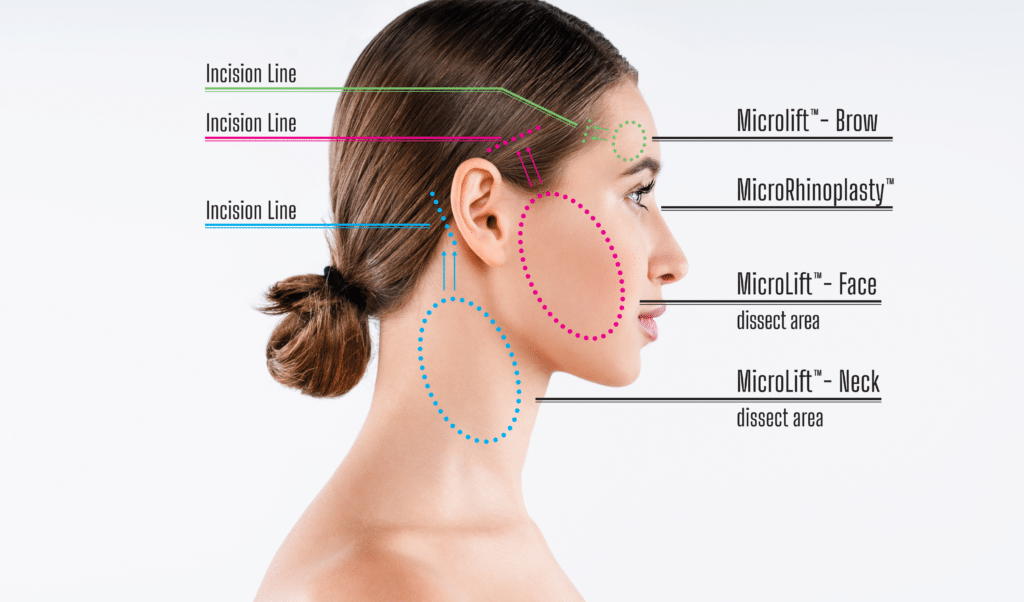
The Connection Between Facial Contours and Skin Texture
Facial texture isn’t just about the surface of your skin—it’s about the underlying structures that create smooth, youthful contours. When facial tissues begin to lose their firmness and definition, the overlying skin develops an uneven appearance that can manifest as:
- Subtle irregularities along the jawline
- Loss of definition that creates shadow and depth variations
- Fine textural changes where skin meets underlying structure
- Uneven surface appearance due to underlying tissue displacement
Dr. Miller’s microsurgery procedures address these textural concerns at their source: the structural foundation that supports smooth skin.
How Microsurgical Techniques Improve Facial Texture
Unlike surface treatments that only address the outermost layer of skin, microsurgical approaches work from within to create the smooth, even contours that result in improved overall texture. This structural approach to texture improvement offers several distinct advantages:
Precision Tissue Repositioning for Smoother Contours
Microsurgical techniques allow Dr. Miller to make precise adjustments to underlying facial structures. By repositioning tissues with millimeter accuracy, these procedures create the smooth foundational contours that naturally improve surface texture appearance.
Elimination of Structural Irregularities
Many textural concerns stem from underlying structural changes rather than skin surface issues alone. Microsurgery addresses these foundational irregularities, resulting in smoother, more even facial contours that naturally enhance overall texture.
Enhanced Definition for Improved Light Reflection
Smooth, well-defined facial contours interact with light differently than from uneven surfaces. By restoring proper structural definition through microsurgical techniques, Dr. Miller helps create the smooth light reflection patterns associated with youthful, refined skin texture.
MicroLift: Structural Refinement for Texture Enhancement
The MicroLift procedure exemplifies how microsurgical precision can dramatically improve facial texture through structural enhancement. This innovative approach addresses texture concerns by:
Creating Smooth Jawline Definition
The MicroLift technique meticulously repositions facial tissues to eliminate the subtle irregularities that can make the jawline appear uneven or poorly defined. By creating smooth, continuous contours, the procedure naturally enhances the overall texture appearance of the lower face.
Improving Mid-Face Smoothness
Through precise tissue advancement, the MicroLift creates the smooth mid-face contours that are essential for an even, refined appearance. This structural approach to texture improvement provides results that surface treatments simply cannot achieve.
Restoring Natural Volume Distribution
When facial volume is properly distributed through microsurgical techniques, it creates the smooth, even surface that characterizes youthful skin texture. The MicroLift’s ability to restore natural volume patterns contributes significantly to overall texture refinement.
Recovery Benefits for Texture Improvement:
- Immediate structural enhancement: Changes to underlying contours improve texture appearance right away
- Gradual refinement: As healing progresses, the newly positioned tissues settle into increasingly smooth contours
- Long-lasting texture improvement: Structural changes provide enduring enhancement to overall facial texture
MicroRhinoplasty: Precision Texture Refinement
For patients concerned with nasal texture irregularities, MicroRhinoplasty offers an unparalleled approach to achieving smooth, refined contours:
Eliminating Surface Irregularities
The precision of MicroRhinoplasty allows Dr. Miller to address even the most subtle textural irregularities along the nasal bridge. By removing tissue layer by layer with specialized microsurgical instruments, the procedure creates the smooth, even contours that define refined nasal texture.
Creating Seamless Transitions
One of the hallmarks of excellent nasal texture is the seamless transition between different areas of the nose. MicroRhinoplasty’s precision approach ensures these transitions are smooth and natural, contributing to overall textural refinement.
Preserving Natural Texture Patterns
Unlike more invasive techniques, MicroRhinoplasty works with your natural tissue patterns to enhance rather than disrupt existing texture. This preservation of natural characteristics ensures that improvements look completely authentic.
Texture-Focused Recovery:
- Minimal tissue disruption: Less trauma means better preservation of natural texture patterns
- Reduced inflammation: Lower inflammatory response helps maintain smooth healing
- Quick texture stabilization: Most patients see final texture improvements within weeks rather than months
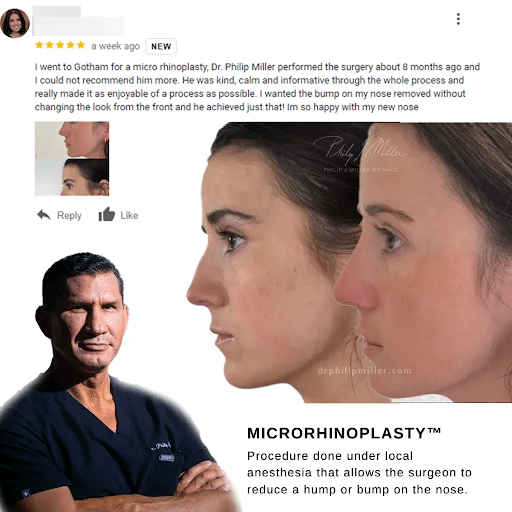
The Science of Microsurgical Texture Enhancement
Understanding how microsurgical techniques improve facial texture requires examining the relationship between structure and surface appearance:
Precision Instrumentation for Texture Control
Dr. Miller’s microsurgical approach utilizes specialized instruments that allow for unprecedented precision in tissue manipulation. This level of control is essential when addressing subtle textural concerns that require millimeter-level accuracy.
Minimized Tissue Trauma for Better Texture Outcomes
Traditional surgical approaches can disrupt the delicate tissue architecture that contributes to smooth texture. Microsurgical techniques minimize this disruption, preserving the natural patterns that create a refined surface appearance.
Strategic Incision Placement for Texture Preservation
The placement of microsurgical incisions is carefully planned to avoid disrupting areas crucial for natural texture patterns. This strategic approach ensures that improvements enhance rather than compromise existing textural qualities.
Manhattan Lifestyle Considerations for Texture Enhancement
New York’s demanding professional environment requires solutions that deliver texture improvements without disrupting busy schedules:
Minimal Downtime for Busy Professionals
The precision of microsurgical techniques means less tissue trauma and faster healing, allowing Manhattan professionals to achieve texture improvements without extended time away from work.
Immediate Structural Improvements
Many patients notice improved contours and texture immediately after microsurgical procedures, with continued refinement as healing progresses. This immediate improvement is particularly valuable for those with demanding social and professional commitments.
Natural-Looking Enhancement
Microsurgical texture improvements are designed to look completely natural, ensuring that colleagues and clients notice you look refreshed without being able to identify specific changes.
Long-Term Benefits of Microsurgical Texture Enhancement
The structural improvements achieved through microsurgical techniques provide lasting benefits for facial texture:
Enduring Structural Foundation
By addressing texture concerns at the structural level, microsurgical improvements provide a lasting foundation for smooth, refined facial contours.
Progressive Improvement
Many patients notice continued texture refinement for months after their procedures as tissues settle into their new, improved positions.
Enhanced Confidence
The smooth, refined texture achieved through microsurgical techniques often provides a significant boost in confidence that extends far beyond the physical improvements.
Advanced Texture Analysis and Treatment Planning
Dr. Miller’s approach to texture enhancement begins with a comprehensive analysis:
Three-Dimensional Texture Assessment
Using advanced imaging and analysis techniques, Dr. Miller evaluates how light interacts with your facial contours to identify areas where microsurgical enhancement can improve overall texture.
Structural Texture Mapping
This detailed analysis identifies the specific structural changes that will most effectively improve your individual texture concerns.
Predictable Texture Outcomes
The precision of microsurgical planning allows Dr. Miller to provide realistic expectations for texture improvements and long-term results.
Your Journey to Refined Facial Texture
Ready to discover how microsurgical techniques can transform your facial texture with minimal downtime? Dr. Philip Miller’s Manhattan practice offers the expertise and precision needed to achieve the smooth, refined contours you desire.
Whether your concerns focus on jawline definition, nasal texture irregularities, or overall facial smoothness, Dr. Miller’s microsurgical expertise ensures natural-looking improvements that enhance your confidence while respecting your busy lifestyle.
Contact our Manhattan office to schedule your personalized consultation and discover which microsurgical approach best addresses your texture concerns. From the comprehensive benefits of the MicroLift to the precision refinement of MicroRhinoplasty, your path to smoother, more refined facial texture begins with understanding how microsurgery procedures can transform your appearance through structural enhancement rather than surface manipulation alone.
Experience the confidence that comes with smooth, refined facial texture—achieved through the precision and artistry of Dr. Miller’s microsurgical expertise.
Neck Lift vs. MicroLift Neck: Which Option Fits Your Summer Schedule?
As summer continues in New York City, many patients are contemplating neck rejuvenation to enhance their appearance for the upcoming fall social season and holiday gatherings. While late summer timing requires careful consideration, there are neck lift options that can accommodate different timelines and recovery schedules. Whether you’re looking to address tech-neck concerns or natural aging signs, choosing the right procedure for your schedule is essential for optimal results.
Understanding Your Neck Rejuvenation Options for Summer
At our Manhattan practice, Dr. Philip J. Miller, MD, FACS, offers two primary surgical approaches to neck rejuvenation that can accommodate different summer timelines and aesthetic goals:
Traditional Neck Lift
Our comprehensive surgical neck lift provides the most dramatic and permanent results for reshaping your neck and jawline. This option requires the most recovery time but delivers transformative results for those with significant aging concerns or moderate to severe neck laxity.
The traditional neck lift addresses:
- Significant skin sagging and excess
- Prominent neck bands (platysmal bands)
- Deep jowls and jawline concerns
- Excess fat deposits under the chin
- Multiple aging signs requiring comprehensive correction
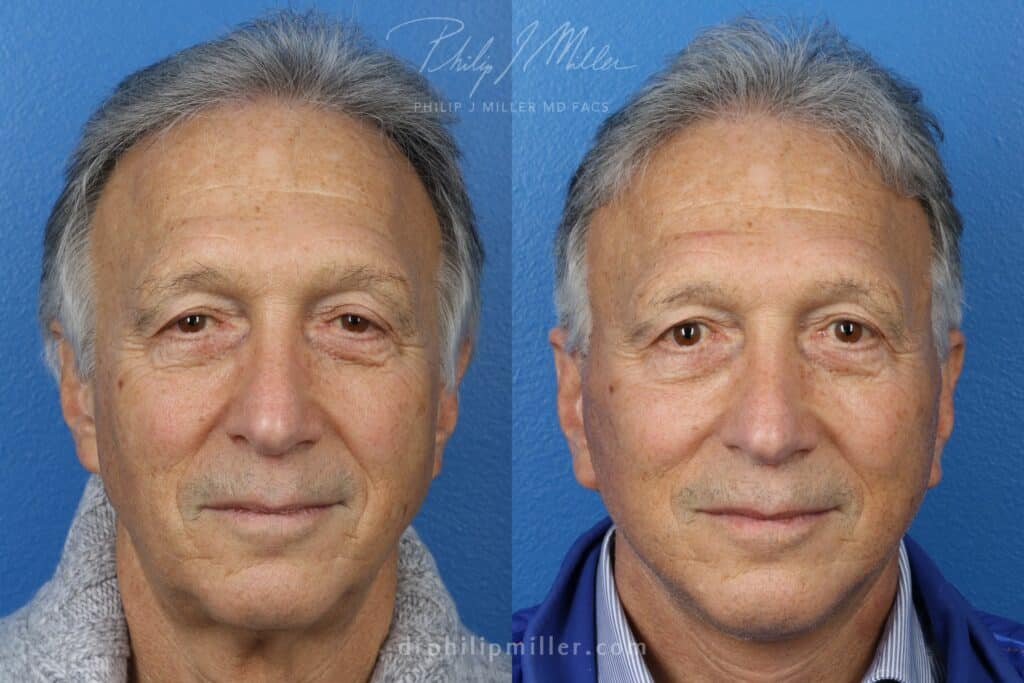
MicroLift Neck
For patients seeking targeted neck improvement with minimal downtime, our innovative MicroLift Neck offers a less invasive surgical alternative with significantly shorter recovery time. This sophisticated microsurgical technique delivers impressive results while dramatically reducing healing time and scarring.
The benefits of MicroLift Neck for summer planning include:
- Procedure completed under IV sedation in about two hours
- Minimal pain, swelling, and bruising compared to traditional surgery
- Return to normal activities within 1 week
- Precision results for early to moderate neck aging
- Nearly invisible scarring behind the ears
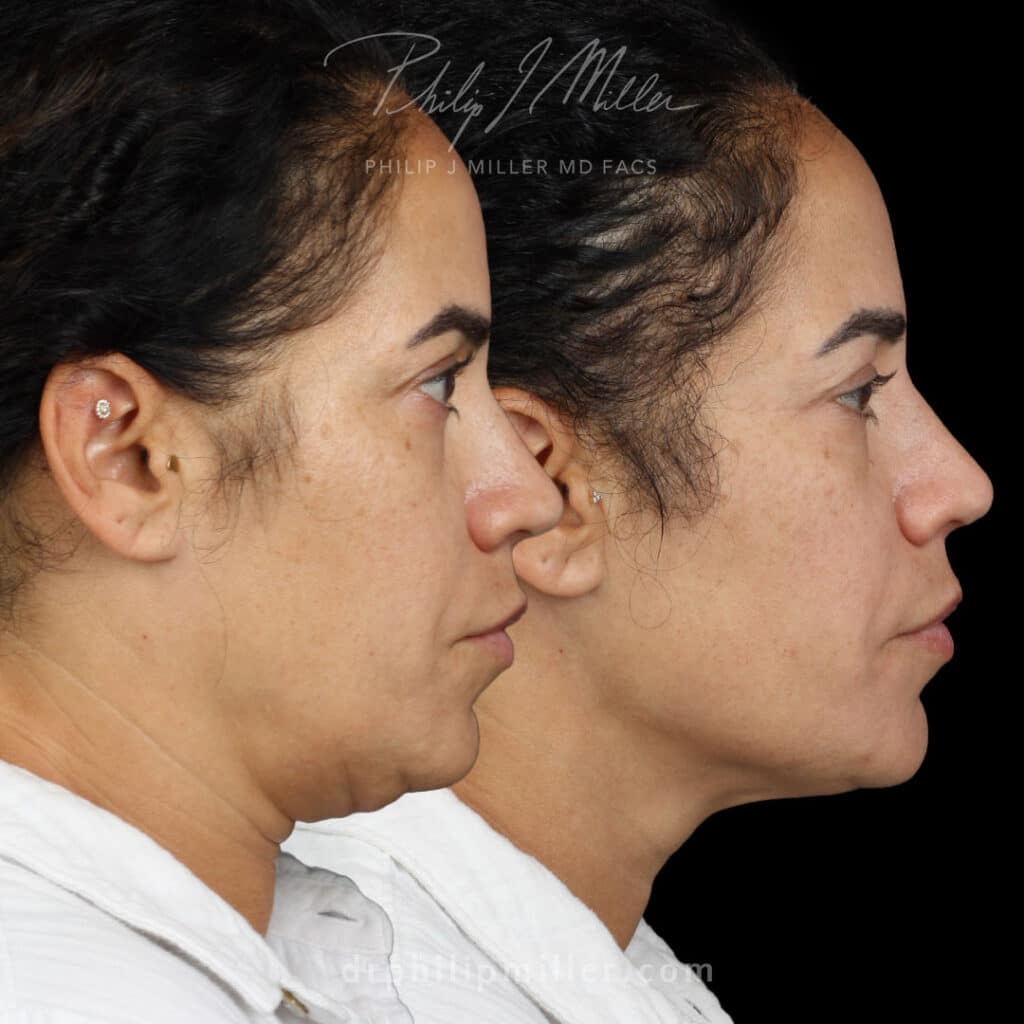
Timing Your Neck Lift for Optimal Fall Results
If you’re planning to look your best for fall events and holiday gatherings, understanding the timing requirements for each procedure is essential:
Traditional Neck Lift Timeline
Most patients experience visible bruising and swelling for 1-2 weeks following traditional neck lift surgery. While you’ll be presentable after your initial healing period, residual swelling can persist for several weeks. The most noticeable improvements occur within the first month, but your neck continues to refine and settle into its final shape over 3-6 months.
For fall and holiday planning, we recommend scheduling your traditional neck lift at least 6-8 weeks before any major events. An August procedure positions you perfectly for October events, while early September timing works well for Thanksgiving and holiday gatherings. This timeline allows for:
- Complete healing of visible bruising and swelling
- Removal of all external dressings
- Return to all normal activities
- Confidence in your appearance for fall social events
- Full results by the holiday season
MicroLift Neck Timeline
With significantly less downtime than traditional neck lift surgery, MicroLift Neck can be scheduled much closer to fall events. Most patients can return to work within one week, though strenuous activity should be avoided for 3-4 weeks. For optimal results, schedule your MicroLift Neck at least 3-4 weeks before major fall events – making late August or early September ideal timing for October celebrations.
Recovery From Neck Lift: What to Expect
Understanding the recovery process is crucial for planning your summer neck rejuvenation. Here’s what to expect during the weeks following your procedure:
First Week After Surgery (Traditional Neck Lift)
- Wear compression garments for support and swelling control
- Expect bruising and swelling around the neck and jawline
- Sleep with your head elevated to minimize swelling
- Avoid strenuous activities and keep the neck protected
- Have someone assist you for the first 24-48 hours
First Week After MicroLift Neck
- Wear compression garments for support and swelling control
- Expect bruising and swelling around the neck and jawline
- Light activities can be resumed within 2-3 days
- Return to work typically possible within one week
- Gentle neck movements encouraged to prevent stiffness
2-3 Weeks After Traditional Neck Lift
- Most visible bruising and swelling will subside
- You’ll feel comfortable going out in public
- Makeup can be used to cover any residual discoloration
- Light exercise can typically be resumed
- Gradual return to normal neck movements
2-3 Weeks After MicroLift Neck
- Minimal residual swelling or bruising
- Full return to normal activities and exercise
- Results becoming more apparent
- Comfortable with all social activities
4-6 Weeks After Traditional Neck Lift
- Resume all normal activities including exercise
- Visible swelling should be virtually gone
- Final neck contour begins to emerge
- Sun protection remains crucial for optimal healing
4-6 Weeks After MicroLift Neck
- Complete healing achieved
- Final results fully visible
- All activity restrictions lifted
- Optimal neck contour established
Full Recovery Timeline
While you’ll look presentable within 1-2 weeks (MicroLift Neck) or 2-3 weeks (traditional neck lift), complete healing takes time. Most patients see their final results develop over 2-3 months (MicroLift Neck) or 3-6 months (traditional neck lift) as subtle swelling continues to resolve and the neck structures fully settle.
Summer-Specific Neck Lift Considerations
Sun Exposure Precautions
One of the most critical factors to consider for summer neck lift is sun protection. The skin on your neck will be particularly sensitive following surgery, and excessive sun exposure can lead to:
- Increased or prolonged swelling
- Hyperpigmentation of surgical scars
- Delayed healing
- Compromised aesthetic results
For at least three months following neck lift surgery, it’s essential to:
- Apply broad-spectrum SPF 30+ sunscreen to your neck daily
- Wear high-necked clothing or scarves when outdoors initially
- Limit direct sun exposure, especially during peak hours
- Consider seeking shade whenever possible during healing
Water Activities and Swimming
Many patients wonder when they can resume swimming and water activities after neck lift surgery. General guidelines include:
- Wait at least 3-4 weeks before swimming in pools (traditional neck lift)
- Postpone ocean swimming for 4-6 weeks due to salt water
- MicroLift Neck patients can typically swim after 2-3 weeks
- Avoid diving and water sports that could impact the neck for 6-8 weeks
Heat and Humidity Considerations
Summer heat and humidity can sometimes exacerbate swelling after neck lift surgery. To manage this effectively:
- Stay in climate-controlled environments when possible during peak healing
- Use cold compresses as directed to reduce swelling
- Stay well-hydrated to support healing
- Consider scheduling indoor activities during the hottest parts of the day
The NatraLook® Approach to Summer Neck Lift
At our practice, we utilize the exclusive NatraLook® process to ensure your neck lift results align perfectly with your aesthetic goals. This approach is particularly valuable when planning a summer neck lift, as it helps create a unified vision for your outcome that complements your overall summer confidence.
The NatraLook® consultation process involves:
- Comprehensive evaluation of your neck structure and facial harmony
- Detailed discussion of your aesthetic goals and summer timeline
- Collaborative planning for natural-looking results that enhance your confidence
- Creation of a personalized treatment approach that considers your summer activities
Choosing the Right Neck Lift Approach for Your Fall Timeline
When considering neck rejuvenation for the upcoming fall season, it’s important to align your aesthetic goals with your timeline:
- 6-8 weeks before fall/holiday events: Ideal for traditional neck lift with comprehensive neck and jawline reshaping – perfect for August scheduling
- 3-4 weeks before fall events: Perfect timing for MicroLift Neck for targeted neck improvement – ideal for late August/early September
Many patients also consider combining their neck lift with a facelift for comprehensive facial rejuvenation when they have adequate recovery time.
During your consultation, Dr. Miller will discuss which surgical approach is best suited to your specific needs, goals, and fall timeline.
The Benefits of Pre-Fall Neck Lift Planning
Beyond practical recovery considerations, there are several advantages to planning your neck lift for fall results:
- Looking your best for the busy fall social season and holiday gatherings
- Having your new profile featured in holiday photos and family memories
- Addressing tech-neck concerns before increased indoor video calls during cooler months
- Completing recovery during the less socially demanding late summer period
- Freedom to wear fall and winter clothing styles that complement your refined neckline
- Starting the new year with confidence in your refreshed appearance
Expert Neck Lift Care in Manhattan
As a double board-certified facial plastic surgeon with over two decades of experience, Dr. Miller provides patients throughout New York City with exceptional neck rejuvenation care and natural-looking results that enhance summer confidence. His exclusive focus on facial plastic surgery ensures the highest level of expertise for your neck lift procedure.
Schedule Your Consultation Today
If you’re considering neck lift surgery before summer, now is the ideal time to schedule a consultation in New York City. Together, we’ll create a personalized plan that aligns with your aesthetic goals and summer timeline.
Contact our Manhattan practice today to begin your neck rejuvenation journey and ensure you’re ready to put your best profile forward this summer. Don’t let another season pass without the neck confidence you deserve.
Why MicroLift-Neck Is the Ideal End-of-Summer Treatment
As summer winds down and the return to work, school, and social commitments approach, many people reflect on how they want to present themselves in the months ahead. While traditional surgical procedures often require weeks of recovery time that conflicts with busy fall schedules, the MicroLift-Neck offers a compelling solution for those seeking facial rejuvenation without extensive downtime. Philip J. Miller, MD, FACS, a double board-certified facial plastic surgeon in New York City, specializes in this minimally invasive approach that delivers remarkable results with a recovery timeline that fits seamlessly into your lifestyle.
Understanding the MicroLift-Neck Advantage
The MicroLift-Neck represents a revolutionary approach to neck rejuvenation that addresses common concerns without the extensive recovery associated with traditional procedures. Unlike comprehensive surgical interventions that require weeks of social downtime, this minimally invasive neck lift technique targets specific areas of concern with precision and efficiency.
This innovative procedure focuses on tightening loose skin, eliminating excess fat deposits, and improving the definition of the jawline and neck area. The technique involves smaller incisions strategically placed to minimize scarring while maximizing results. Patients can expect to see immediate improvements with continued enhancement over the following months as tissues settle and heal.

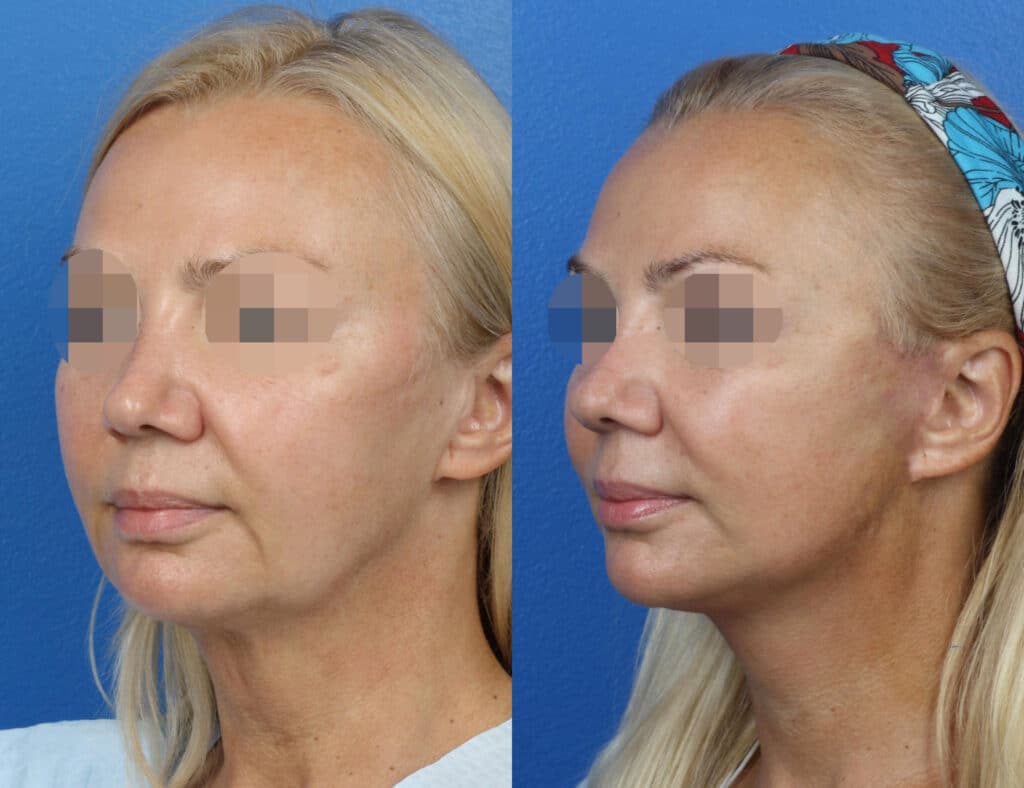
Perfect Timing for Fall Transformation
End-of-summer timing proves ideal for MicroLift-Neck procedures for several compelling reasons. The transition from vacation mode to professional commitments creates a natural window for subtle enhancement that colleagues and friends will notice as a refreshed, more youthful appearance rather than obvious surgical intervention.
September and October offer optimal healing conditions in New York City. The moderate temperatures and lower humidity levels create comfortable conditions for recovery, while the reduced social obligations of late summer allow patients to heal without missing important events. By the time holiday parties and year-end celebrations arrive, results have fully matured, presenting you at your absolute best.
The psychological benefits of timing cannot be overlooked. Many patients report increased confidence as they return to work or begin new academic years with a more defined, youthful profile. The subtle yet significant improvements achieved through MicroLift-Neck procedures enhance natural features without creating an obviously “done” appearance.
Comparing Treatment Options
When considering neck rejuvenation, patients often weigh the benefits of minimally invasive procedures against more comprehensive surgical options. A traditional facelift addresses extensive sagging and may include neck lifting as part of a comprehensive approach, but requires significantly more recovery time and involves greater surgical intervention.
The MicroLift-Neck specifically targets neck concerns without the extensive tissue manipulation required for full facial rejuvenation. This focused approach results in less swelling, minimal bruising, and faster healing times. Patients typically return to work within a few days, though they may need to avoid strenuous activities for a short period.
For those considering their options, Dr. Miller’s comprehensive guide to neck lift costs in NYC provides detailed information about various approaches and their associated investments. The MicroLift-Neck often represents an excellent value proposition for patients seeking significant improvement with minimal disruption to their lives.
The Procedure Process
Dr. Miller’s approach to MicroLift-Neck begins with a thorough consultation using his NatraLook® process. This comprehensive evaluation assesses facial structure, skin quality, and aesthetic goals to create a customized treatment plan. The procedure itself typically takes 1-2 hours and can be performed with IV sedation.
Strategic incisions are made in inconspicuous locations, often behind the ears or in natural skin creases. Through these small access points, Dr. Miller tightens underlying muscles, removes excess fat if necessary, and repositions tissues for optimal contour. The precision required for this technique demands extensive experience and artistic skill, making surgeon selection crucial for optimal results.
Advanced techniques minimize trauma to surrounding tissues, resulting in less post-operative discomfort and faster healing. Dr. Miller employs specialized instruments and methods that preserve blood supply and nerve function while achieving dramatic improvements in neck definition and jawline clarity.
Recovery and Results Timeline
One of the most appealing aspects of the MicroLift-Neck is the manageable recovery process. Most patients experience mild swelling and bruising that resolves within 7-10 days. Discomfort is typically minimal and easily managed with over-the-counter medications.
During the first week, patients should plan for limited social activities, though many return to work within 3-5 days, depending on their profession. Makeup can usually camouflage any residual bruising, and strategic clothing choices help conceal any remaining swelling around the neck area.
Results continue to improve over the following months as tissues heal and settle into their new position. The final outcome typically becomes apparent at the 3-month mark, though many patients notice significant improvement within the first few weeks. The longevity of results varies by individual, but most patients enjoy their enhanced appearance for 5-7 years or longer.
Ideal Candidates for MicroLift-Neck
The best candidates for MicroLift-Neck procedures are individuals in good overall health who have realistic expectations about outcomes. Those with mild to moderate neck sagging, early jowl formation, or loss of neck definition often achieve excellent results with this minimally invasive approach.
Age is less important than skin quality and the degree of aging present. Some patients in their 40s benefit significantly from MicroLift-Neck, while others may be better served by comprehensive surgical options. Dr. Miller evaluates each patient individually to recommend the most appropriate approach for their specific concerns and goals.
Patients who cannot commit to extensive recovery periods find the MicroLift-Neck particularly appealing. Busy professionals, parents with young children, and those with active social calendars appreciate the ability to undergo meaningful facial enhancement without significant lifestyle disruption.
Combining Treatments for Enhanced Results
Many patients choose to combine a MicroLift-Neck with complementary treatments for comprehensive facial rejuvenation. Non-surgical options like Botox® and dermal fillers can address upper face concerns, while the MicroLift-Neck focuses on the neck area.
Laser treatments can improve skin texture and tone, creating a more unified and youthful appearance across all facial areas. The combination approach allows patients to address multiple concerns efficiently while maintaining reasonable recovery expectations.
Dr. Miller works with each patient to create a comprehensive treatment plan that achieves their aesthetic goals within their lifestyle constraints and budget considerations. Sequential treatments can be planned to maximize results while minimizing downtime.
Why Choose Dr. Miller for Your MicroLift-Neck in NYC
As a double board-certified facial plastic surgeon with over 20 years of experience in New York City, Dr. Miller brings unparalleled expertise to MicroLift-Neck procedures. His recognition as a Castle Connolly Top Doctor for over a decade reflects his commitment to excellence and patient satisfaction.
Dr. Miller’s Manhattan practice features a fully accredited, state-of-the-art surgical facility designed specifically for facial plastic surgery procedures. This dedicated environment ensures optimal safety standards and comfortable patient experiences throughout the treatment process.
The NatraLook process developed by Dr. Miller ensures that each patient receives a customized treatment approach designed to enhance their natural features rather than create an artificial appearance. This philosophy has earned him a reputation for delivering consistently beautiful, natural-looking results.
Planning Your End-of-Summer Transformation
If you’re considering a MicroLift-Neck as your end-of-summer treatment, timing your consultation is important for optimal scheduling. September appointments allow for October procedures, providing adequate healing time before holiday celebrations and winter social events.
During your consultation, Dr. Miller will evaluate your facial structure, discuss your aesthetic goals, and explain the MicroLift-Neck process in detail. You’ll receive a comprehensive treatment plan with realistic expectations about results and recovery timeline.
The consultation fee of $400 applies toward your procedure cost, making it a valuable investment in your aesthetic journey. Dr. Miller’s team provides detailed pre-operative instructions and post-operative care guidelines to ensure optimal outcomes and a comfortable recovery.
Ready to end summer strong with a refined, youthful profile? Contact our office in New York City to schedule your consultation. Dr. Miller’s expertise in minimally invasive neck rejuvenation can help you achieve the subtle yet significant improvements you desire, with a recovery timeline that fits your busy lifestyle. Don’t let another season pass wishing you looked as vibrant as you feel – take the first step toward your transformation today.
Redefining Masculinity: The Rise of Male Rhinoplasty
Modern masculinity embraces self-improvement and confidence-building in all forms. Today’s men understand that taking care of their appearance isn’t vanity—it’s an investment in their personal and professional success. Male rhinoplasty has emerged as one of the most sought-after cosmetic procedures for men, offering transformative results that enhance masculine features while maintaining natural strength and character.
Philip J. Miller, MD, FACS, brings over two decades of specialized expertise in male rhinoplasty to his Manhattan practice. As a double board-certified facial plastic surgeon, Dr. Miller understands the unique anatomical considerations and aesthetic goals that distinguish male nose surgery from female procedures.
The masculine difference: Why male rhinoplasty requires specialized expertise
Male rhinoplasty demands a fundamentally different approach than female nose surgery. Men’s noses possess distinct characteristics that must be preserved and enhanced rather than feminized. Understanding these differences is crucial for achieving results that look natural and maintain masculine appeal.
Structural considerations for male noses
Men typically have larger, more prominent nasal structures with stronger cartilage and thicker skin. The ideal male nose maintains a straight or slightly convex profile, avoiding the scooped or overly refined appearance that works well for women but appears unnatural on men. The nasal tip should project confidently without appearing delicate or upturned.
Preserving masculine strength
The goal of male rhinoplasty isn’t to create a small, delicate nose but rather to refine and balance existing features while maintaining inherent strength. Dr. Miller’s approach focuses on removing imperfections—such as bumps, asymmetries, or breathing obstructions—while preserving the masculine character that defines a strong male profile.
Proportional harmony with facial features
Men’s faces typically feature more angular jawlines, broader foreheads, and stronger brow ridges. The nose must complement these masculine features rather than compete with them. A successful male rhinoplasty creates harmony between all facial elements, ensuring the nose enhances rather than detracts from overall masculine appeal.
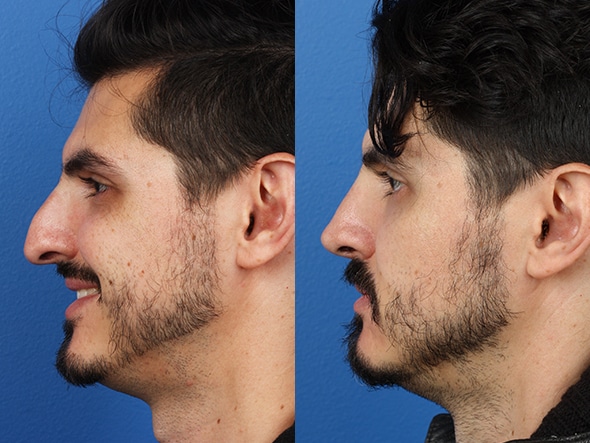
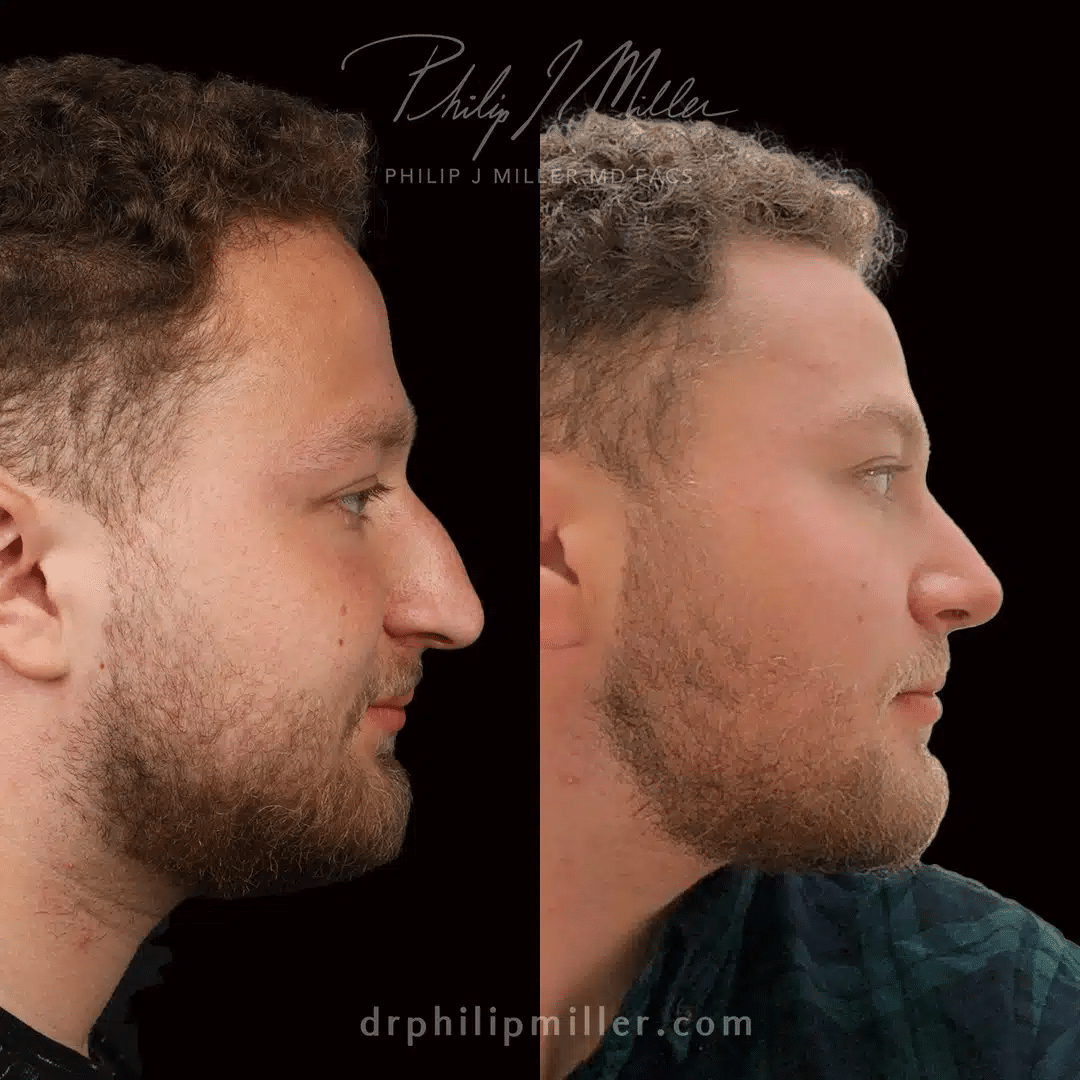
Common concerns addressed by male rhinoplasty
Men seek rhinoplasty for various reasons, many related to both aesthetic improvement and functional enhancement. Understanding these motivations helps create targeted treatment plans that address specific masculine concerns.
Dorsal hump reduction
Many men develop prominent bumps along the nasal bridge, often from sports injuries or genetics. While some men embrace this rugged characteristic, others prefer a smoother profile that projects confidence without aggression. Dr. Miller’s technique removes excess bone and cartilage while maintaining a strong, straight line that complements masculine features.
Nasal tip refinement
Bulbous or drooping nasal tips can create an aged or tired appearance. Male rhinoplasty can refine the tip while maintaining appropriate projection and avoiding the upturned look that appears feminine. The goal is to create definition without sacrificing strength or character.
Breathing improvement
Functional rhinoplasty addresses structural issues that impair breathing, such as deviated septums or enlarged turbinates. Many men discover that improving nasal function enhances athletic performance, reduces sleep disturbances, and increases overall quality of life. Dr. Miller combines functional improvements with aesthetic enhancements for comprehensive results.
Injury correction
Sports injuries, accidents, or childhood trauma can create nasal deformities that affect both appearance and function. Reconstructive rhinoplasty restores proper nasal structure while improving aesthetic appeal. These procedures often require advanced techniques to address complex deformities while maintaining masculine characteristics.
Ethnic rhinoplasty considerations
Men from diverse ethnic backgrounds may seek rhinoplasty that enhances their features while preserving cultural identity. Dr. Miller’s expertise in ethnic rhinoplasty ensures results that honor individual heritage while achieving desired improvements. The focus remains on refinement rather than complete transformation.
Advanced techniques for superior male rhinoplasty results
Dr. Miller employs cutting-edge techniques specifically adapted for male anatomy and aesthetic goals. These advanced approaches minimize downtime while maximizing results, allowing busy professionals to return to their routines quickly.
Closed vs. open rhinoplasty approaches
The choice between closed and open rhinoplasty depends on the complexity of changes needed. Closed rhinoplasty, performed entirely through internal incisions, can be completed without visible scarring. Open rhinoplasty provides greater surgical access for complex cases but requires a small incision across the columella, which is not visible once healed. Dr. Miller selects the optimal approach based on individual needs and desired outcomes.
MicroRhinoplasty™ for targeted dorsal refinement
For men seeking subtle refinement of their nasal bridge contour without extensive surgery, Dr. Miller offers his innovative MicroRhinoplasty™ technique. This specialized 15-minute procedure uses an air-powered microsaw to precisely reduce bony humps layer by layer through a small nostril incision. Performed under local anesthesia with minimal downtime, MicroRhinoplasty™ allows men to return to work within a day while achieving natural-looking dorsal refinement that maintains masculine strength.
Preservation rhinoplasty
Rather than completely restructuring the nose, preservation techniques maintain the natural dorsal line while making subtle improvements. This approach is ideal for men who want refinement without dramatic change, preserving the strong masculine profile while eliminating specific imperfections.
Computer imaging and surgical planning
Dr. Miller uses advanced 3D imaging technology to show patients potential results before surgery. This visualization helps ensure realistic expectations and allows for precise surgical planning. Men can see how proposed changes will enhance their masculine features while maintaining natural appearance.
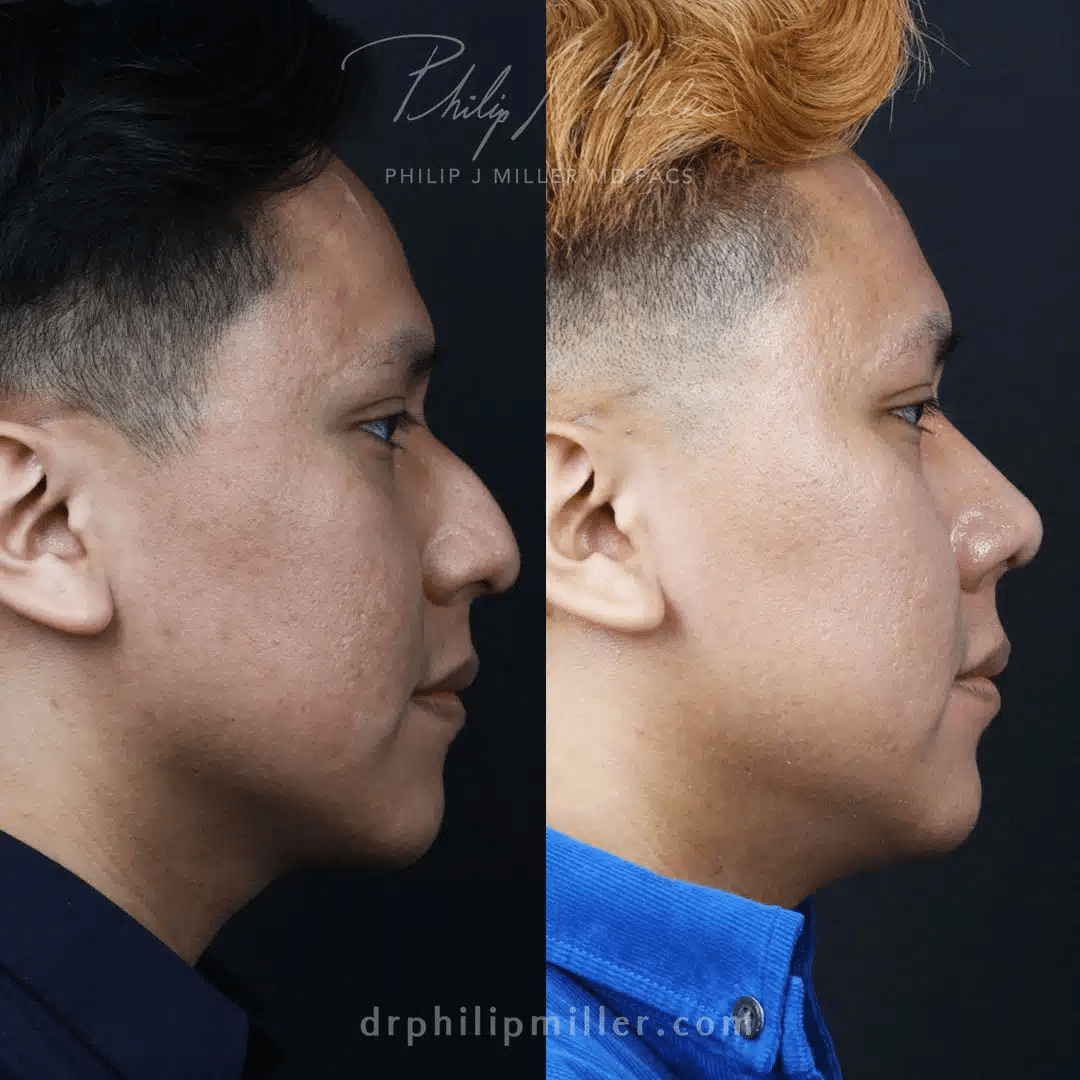
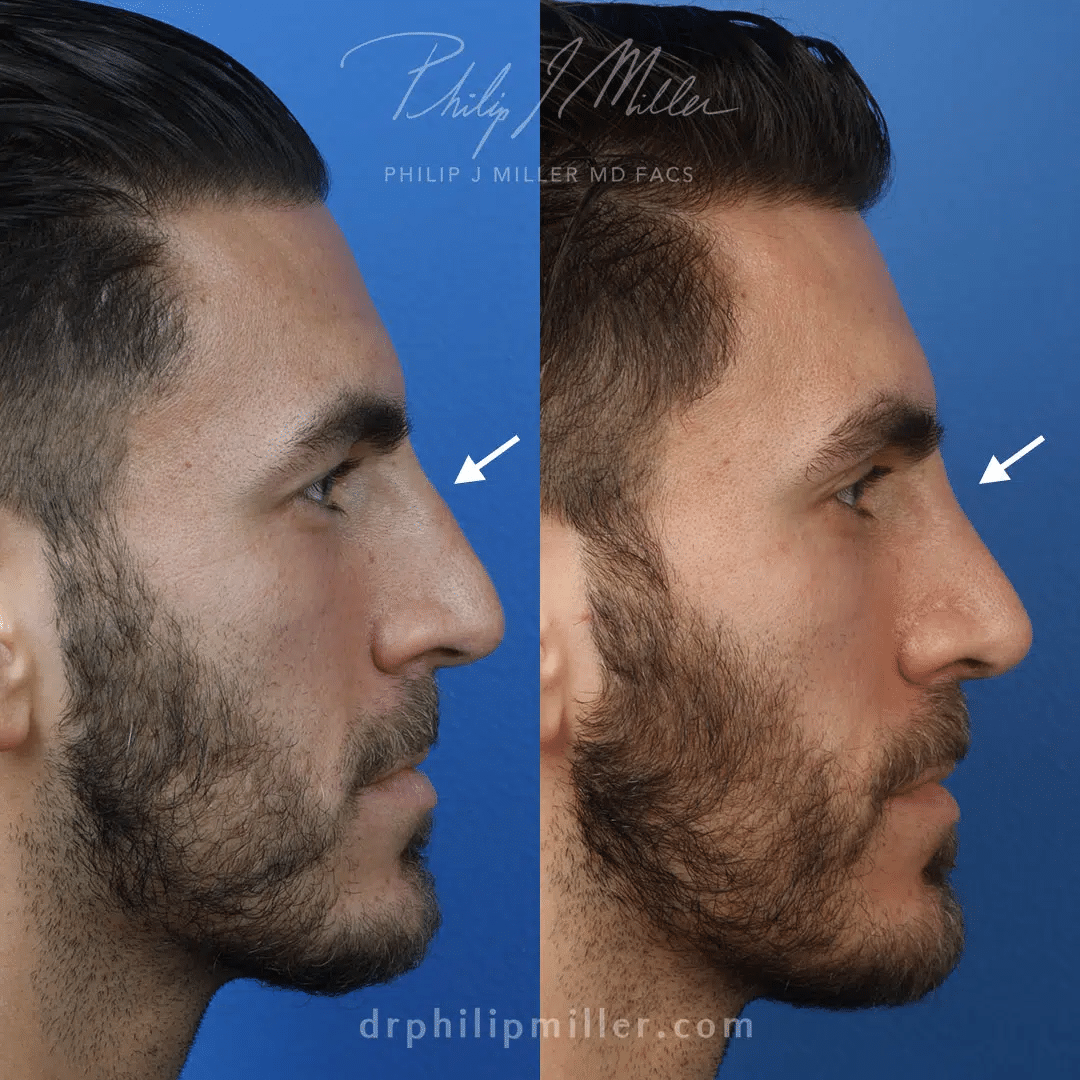
The male rhinoplasty experience: What to expect
Understanding the rhinoplasty process helps men make informed decisions about their procedure. Dr. Miller’s comprehensive approach ensures each patient receives personalized care from consultation through recovery.
Initial consultation and assessment
During your consultation, Dr. Miller evaluates your nasal structure, discusses your goals, and explains realistic outcomes. He considers your facial proportions, skin thickness, and healing characteristics to create a customized surgical plan. The consultation includes computer imaging to visualize potential results and ensure alignment with your expectations.
Surgical procedure details
Male rhinoplasty typically takes 1-3 hours, depending on complexity. The procedure is performed under general anesthesia in Dr. Miller’s accredited surgical facility. Advanced techniques minimize tissue trauma, reducing post-operative discomfort and accelerating recovery.
Recovery timeline for busy professionals
Most men return to desk work within a week, though physical activity restrictions continue for several weeks. Initial swelling subsides within 10-14 days, allowing return to social and professional activities. Complete healing takes several months, with final results visible after one year.
Managing expectations during healing
Male noses often take longer to heal due to thicker skin and stronger cartilage. Patience during the healing process is essential for achieving optimal results. Dr. Miller provides detailed post-operative instructions and closely monitors progress to ensure proper healing.
Combining procedures for comprehensive enhancement
Many men choose to combine rhinoplasty with other facial procedures for comprehensive improvement. These combination approaches can be more efficient and cost-effective than staging separate procedures.
Rhinoplasty with chin augmentation
Balancing the nose with chin enhancement creates ideal facial proportions. A stronger chin can make the nose appear smaller, while a refined nose can enhance chin projection. This combination is particularly effective for men with weak chin projection or prominent noses.
Simultaneous septoplasty
Combining cosmetic rhinoplasty with functional septoplasty addresses both aesthetic and breathing concerns in a single procedure. This approach is ideal for men with deviated septums who also desire cosmetic improvements.
Non-surgical enhancements
Injectable treatments can complement surgical results or provide temporary improvements for men considering future surgery. Dermal fillers can smooth minor irregularities or enhance chin projection, while neuromodulators address dynamic wrinkles around the eyes and forehead.
Recovery and long-term results
Successful recovery requires following post-operative instructions and allowing adequate healing time. Dr. Miller’s comprehensive aftercare program ensures optimal results and patient satisfaction.
Immediate post-operative care
The first 48 hours after surgery are crucial for proper healing. Patients receive detailed instructions for managing discomfort, reducing swelling, and protecting the surgical site. Dr. Miller’s team provides 24-hour support during this critical period.
Returning to normal activities
Most men return to work within a week, though heavy lifting and strenuous exercise must be avoided for 4-6 weeks. Contact sports should be avoided for at least three months to protect the healing nose from injury.
Long-term maintenance
Rhinoplasty results are permanent, though natural aging continues. Protecting the nose from sun exposure and injury helps maintain optimal appearance. Most men find their confidence increases significantly as final results become apparent.
Why choose Dr. Miller for male rhinoplasty?
Dr. Miller’s expertise in male facial anatomy and aesthetic goals makes him the ideal choice for men considering rhinoplasty. His specialized approach ensures results that enhance masculine features while maintaining a natural appearance.
Specialized male rhinoplasty expertise
With over two decades of experience in facial plastic surgery, Dr. Miller understands the unique requirements of male rhinoplasty. His technique preserves masculine strength while creating refined, natural-looking results that enhance rather than feminize male features.
Advanced surgical techniques
Dr. Miller stays current with the latest rhinoplasty innovations, incorporating advanced techniques that minimize downtime and maximize results. His expertise in both open and closed approaches ensures each patient receives the optimal surgical technique for their specific needs.
Comprehensive male plastic surgery program
As a specialist in male plastic surgery, Dr. Miller offers a complete range of procedures designed specifically for men. His understanding of masculine aesthetics extends beyond rhinoplasty to encompass comprehensive facial enhancement for modern men.
Personalized treatment approach
The NatraLook® process ensures each treatment plan is customized to individual goals and facial characteristics. Dr. Miller takes time to understand your specific concerns and creates a surgical plan that achieves your desired results while maintaining natural masculine appeal.
State-of-the-art facility
Procedures are performed in Dr. Miller’s fully accredited Manhattan surgical facility, ensuring the highest standards of safety and comfort. The modern facility is equipped with advanced technology for optimal surgical outcomes and patient care.
Taking the next step
Male rhinoplasty represents an investment in your confidence and professional success. The procedure can enhance your natural masculine features while correcting functional issues that may impact your quality of life.
Contact our office in New York City to schedule your consultation with Dr. Miller. During this comprehensive appointment, you’ll learn about your options, see potential results through computer imaging, and receive a personalized treatment plan designed to enhance your masculine features while achieving your aesthetic goals.
Whether you’re seeking subtle refinement or more comprehensive enhancement, Dr. Miller’s expertise in male rhinoplasty can help you achieve the confident, masculine appearance that reflects your inner strength and character.
Facelifts and Micro (Mini) Facelifts: Refresh Your Appearance Naturally
Aging is a natural process—but that doesn’t mean you have to live with sagging skin, jowls, or deep facial folds if they don’t reflect how you feel on the inside. A facelift remains one of the most effective ways to restore youthful contours, while the signature MicroLift Face procedure—a specialized micro facelift technique developed by Dr. Miller himself—offers a more subtle but still transformative option for earlier signs of aging. With the right surgeon, both procedures can deliver long-lasting, natural-looking results.
In this guide, we’ll explore the key differences between a full facelift and the MicroLift Face procedure, who makes a good candidate for each, and what to expect from recovery and results. Whether you’re ready for a dramatic refresh or just want to turn back the clock a few years, Dr. Philip Miller’s facial rejuvenation techniques can help you rediscover your confidence.
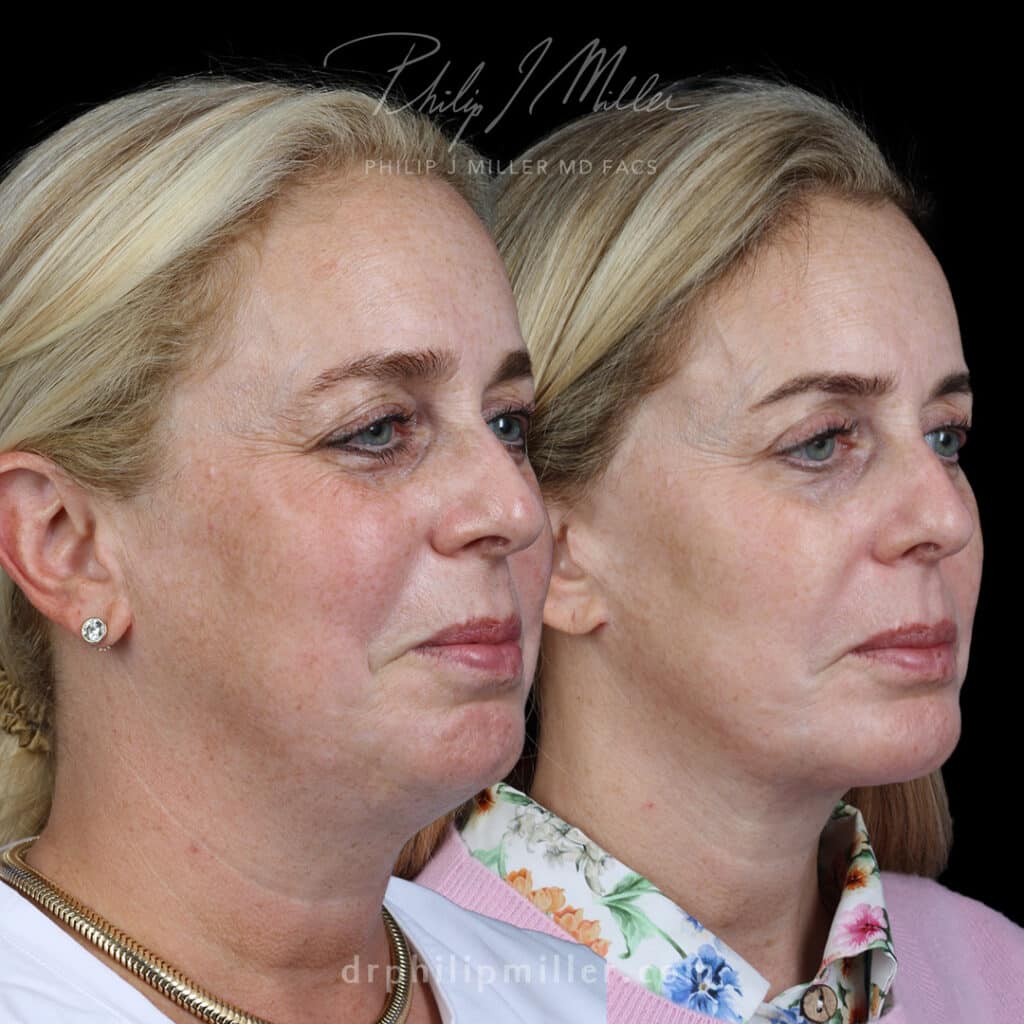
Full Facelift vs. MicroLift Face: What’s the Difference?
A full facelift targets more advanced signs of aging by lifting and repositioning deeper tissues throughout the mid and lower face, along with tightening excess skin. It can dramatically improve sagging cheeks, deep nasolabial folds, jowls, and neck laxity. The MicroLift Face technique, Dr. Miller’s innovative approach to the micro facelift, is a less invasive procedure designed for patients with earlier signs of facial aging. It typically focuses on the lower third of the face (especially the jawline and jowls) using smaller incisions and less extensive tissue repositioning.
| Procedure | Best For | Downtime | Incisions | Longevity |
| Facelift | Moderate to advanced aging | 2–4 weeks | Around the ears | 10+ years |
| MicroLift Face | Mild to moderate aging (20s–50s) | 1–2 weeks | Smaller, discreet | ~5–7 years |
Want to learn more about your options?
Read Dr. Miller’s breakdown of the 7 types of facelifts and which one might be right for you.
The Natural Approach: Dr. Miller’s Signature Techniques in New York City
Dr. Miller takes a unique, personalized approach to every facelift and MicroLift Face procedure, prioritizing natural, harmonious results over a “pulled” or overdone appearance. His NatraLook process ensures your results align with your aesthetic vision and your emotional goals. He also uses the Unified Vision™ approach to assess the entire face and create balance between all its features.
For full facelifts, Dr. Miller strategically repositions deeper layers of facial tissue—not just skin—to restore youthful structure. In MicroLift Face procedures, he uses refined, minimally invasive techniques to provide lift with less downtime and scarring. In both cases, his goal is the same: to help you look refreshed, not different.
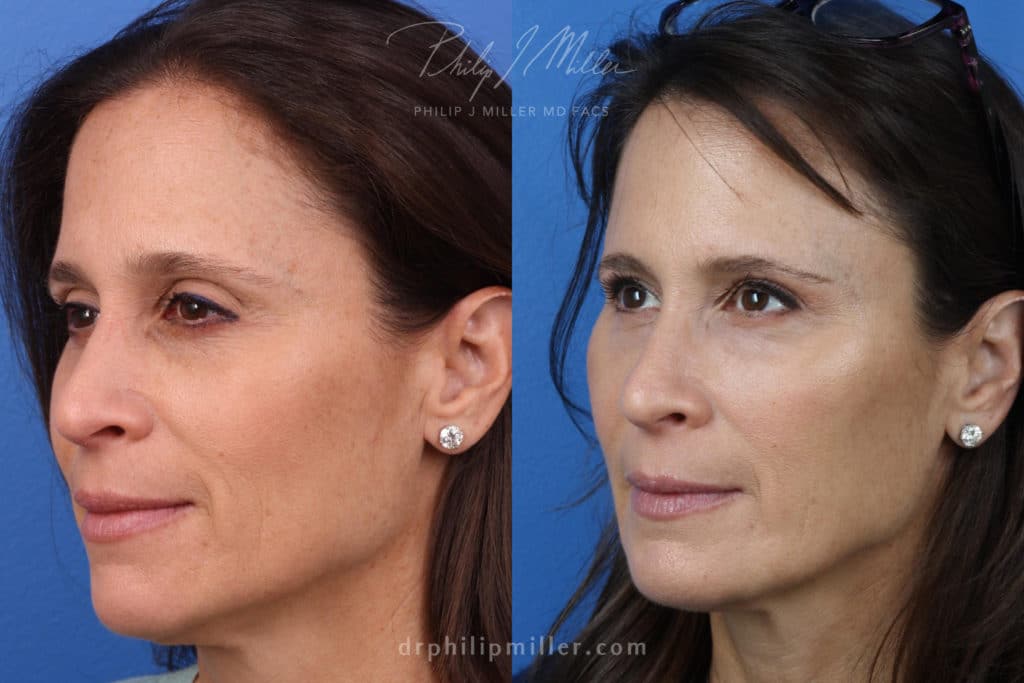
Who’s a Good Candidate?
You might be a candidate for a facelift if:
- You’re experiencing significant facial aging (deep folds, jowls, or neck sagging)
- You’re in good overall health and can undergo general anesthesia
- You want long-lasting, comprehensive facial rejuvenation
You might be a better candidate for a MicroLift Face if:
- You have mild to moderate skin laxity, primarily in the lower face
- You’re looking for a subtle lift with less downtime
- You’re in your 20s to 50s and not yet ready for a full facelift
Not sure which is right for you? Dr. Miller will evaluate your anatomy, goals, and lifestyle during your consultation to recommend the ideal treatment.
Recovery and Results
Facelift Recovery: Most patients need about 2 to 4 weeks of downtime. Swelling, bruising, and tightness are common at first but gradually resolve. Final results typically appear around 3 months post-op and can last a decade or longer.
MicroLift Face Recovery: Because the procedure is less invasive, patients often return to work or social activities within 1 to 2 weeks. Results are visible sooner and look more subtle, but still offer a noticeable improvement in jawline definition and skin tightness.
In both cases, results continue to improve as swelling subsides. Dr. Miller provides detailed aftercare instructions and follow-up appointments to support a smooth, successful recovery.
Planning Your Procedure
A micro facelift typically requires less surgical time and resources than a traditional facelift, which is reflected in the overall investment. The final cost varies based on several factors including procedure complexity, surgical facility, and type of anesthesia used.
During your personal consultation with Dr. Miller, you’ll receive a customized treatment plan along with a detailed breakdown of all associated costs. This individualized approach ensures transparency and helps you make an informed decision about your aesthetic journey.
Dr. Miller understands the importance of making these procedures accessible and offers flexible financing options through CareCredit and Alphaeon, allowing you to invest in your appearance with confidence and convenience.
Why Choose Dr. Philip Miller in New York City?
With over two decades of facial plastic surgery experience and dual board certifications, Dr. Miller is one of the most trusted facelift surgeons in New York. He combines technical precision with an artistic eye and a personalized philosophy that puts your goals at the center of every decision.
Patients choose Dr. Miller for:
- Natural-looking results that never appear overdone
- A customized approach to every procedure
- Innovative techniques, including his proprietary NatraLook® methodology
- Extensive experience with both surgical and non-surgical rejuvenation
If you’re considering a facelift or mini facelift, choosing the right surgeon is just as important as choosing the right procedure. Dr. Miller’s reputation, surgical skill, and dedication to aesthetic harmony make him the ideal partner in your facial rejuvenation journey.
Ready to Refresh Your Look? Schedule a Consultation Today
If you’re ready to look as vibrant and confident as you feel, a facelift or a MicroLift Face with Dr. Philip Miller could be your next step. Schedule your consultation at our New York City office to explore your options, ask questions, and develop a treatment plan tailored to you.
Start your journey to natural-looking rejuvenation with one of the world’s leading facial plastic surgeons.
Mommy Makeovers for the Face: Natural Rejuvenation for Every Mom
Motherhood brings joy and fulfillment, and every mom deserves to look as vibrant as she feels. While traditional mommy makeovers focus on body contouring, facial rejuvenation procedures can help mothers restore their natural radiance and confidence. Philip J. Miller, MD, FACS, offers comprehensive facial rejuvenation options at his Manhattan practice, combining both surgical and non-surgical approaches for natural-looking results that enhance your best features.
Surgical solutions for comprehensive rejuvenation
For mothers seeking dramatic, long-lasting improvements, surgical procedures offer the most comprehensive results. Dr. Miller specializes in creating natural-looking outcomes that enhance rather than alter facial features.
The MicroLift for busy mothers
The MicroLift represents an ideal solution for mothers who want facial rejuvenation without extensive downtime. This minimally invasive procedure mimics the effect of pulling hair back in a ponytail, lifting the mid-face, and improving definition. Performed under local anesthesia in less than an hour, mothers can return to their routines within days rather than weeks.
Traditional facelift procedures
For more comprehensive rejuvenation, a traditional facelift addresses multiple areas simultaneously. Dr. Miller’s technique focuses on repositioning deeper tissues rather than simply pulling skin tight, creating results that look refreshed rather than operated. The procedure can address sagging cheeks, jowls, and neck laxity in a single surgery.
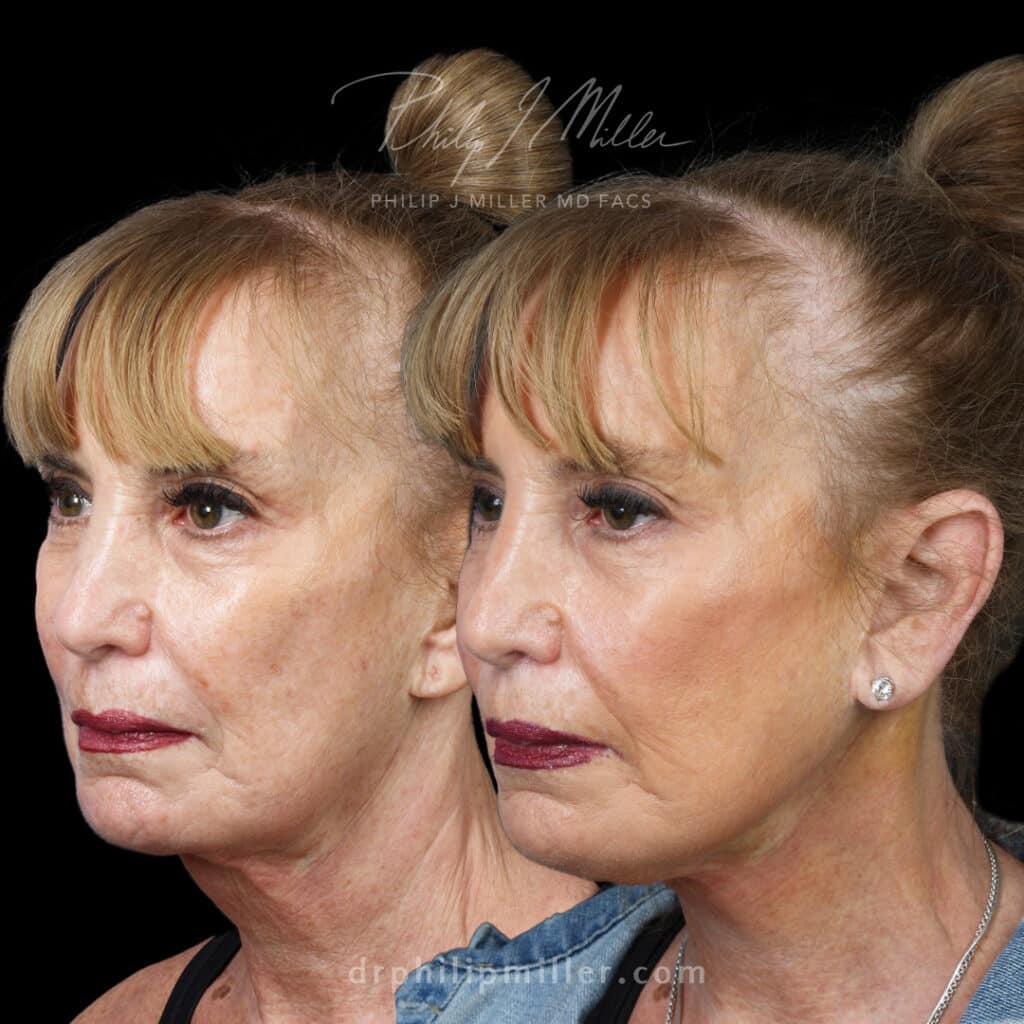

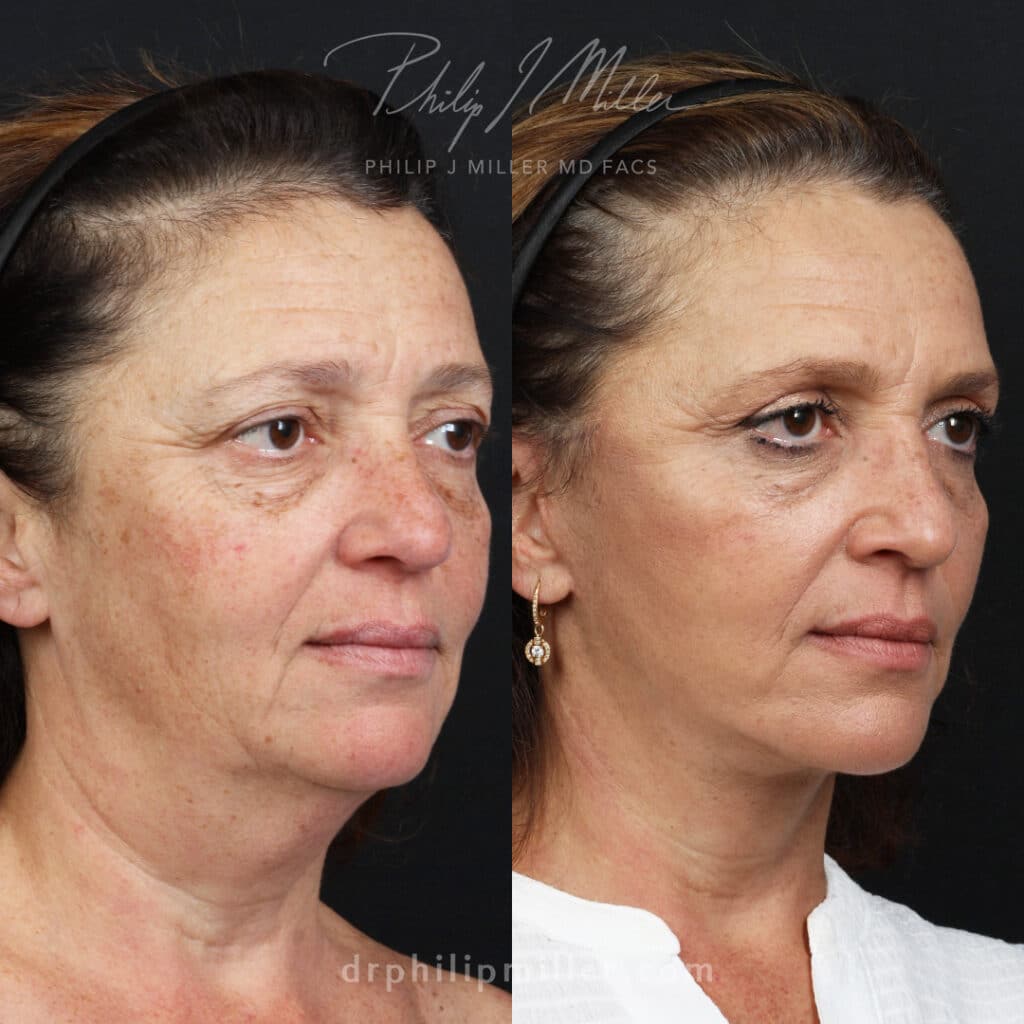
Neck lift for targeted improvement
Many mothers focus primarily on neck changes that occur after pregnancy. A neck lift specifically targets loose skin, muscle bands, and excess fat deposits under the chin. This procedure can be performed alone or combined with other facial surgeries for comprehensive rejuvenation.
Eyelid surgery (blepharoplasty)
Upper and lower blepharoplasty procedures address the tired appearance that plagues many mothers. Upper lid surgery removes excess skin that can hood the eyes, while lower lid procedures eliminate bags and tighten loose skin. The result is a more alert, rested appearance that reflects how mothers feel inside.
Non-surgical options for gradual improvement
Not every mother needs or wants surgery. Dr. Miller offers numerous non-surgical treatments that can create significant improvements with minimal downtime.
Injectable neuromodulators
Botox®, Dysport®, and Jeuveau® effectively treat dynamic wrinkles caused by facial expressions. These injectable treatments can smooth forehead lines, crow’s feet, and frown lines between the eyebrows. Results typically last 3-4 months and require no downtime.
Dermal fillers for volume restoration
Lost facial volume can be replaced using hyaluronic acid fillers like Juvéderm® and Voluma®. These injectable gels restore fullness to cheeks, smooth nasolabial folds, and enhance lip volume. Strategic placement can even provide a subtle lifting effect without surgery.
RHA fillers for dynamic areas
The newest generation of dermal fillers, RHA collection, is specifically designed for areas of facial movement. These resilient hyaluronic acid fillers maintain their shape while allowing natural facial expressions, making them ideal for treating smile lines and other dynamic areas.

Kybella® for double chin reduction
For mothers bothered by stubborn fat under the chin, Kybella offers a non-surgical solution. This injectable treatment permanently destroys fat cells, creating a more defined jawline without surgery. Multiple treatments may be needed for optimal results.
Laser treatments for skin rejuvenation
CO2 laser resurfacing and Fractora treatments address skin texture, tone, and fine lines. These procedures stimulate collagen production, improving overall skin quality. While some downtime is required, results can be dramatic and long-lasting.
Combination approaches for optimal results
Many mothers benefit from combining procedures to address multiple concerns efficiently. Popular combinations include:
- MicroLift with non-surgical eye rejuvenation
- Facelift with eyelid surgery and laser resurfacing
- Neck lift with Kybella for comprehensive lower face improvement
- Injectable treatments combined with laser therapy
Dr. Miller’s NatraLook® process ensures each treatment plan is customized to individual needs and goals.

Special considerations for mothers
Timing procedures around childcare responsibilities requires careful planning. Non-surgical treatments offer immediate return to activities, while surgical procedures require arrangements for help during recovery. Dr. Miller’s team works with mothers to create realistic treatment timelines that accommodate family obligations.
Many mothers choose to wait until they’ve completed their families before pursuing surgical options, as future pregnancies won’t reverse facial procedures but may impact overall results. Non-surgical treatments can maintain appearance during childbearing years, with surgery reserved for more comprehensive rejuvenation later.
Recovery and results
Recovery varies significantly between procedures. Non-surgical treatments typically allow immediate return to normal activities, though some temporary swelling or bruising may occur. The MicroLift requires just a few days of recovery, while traditional facelifts need 10-14 days before returning to public activities.
Results from surgical procedures are long-lasting, though natural aging continues. Non-surgical treatments require periodic maintenance but offer flexibility for busy mothers who can’t commit to extended recovery periods.
Contact our office in New York City to schedule a consultation and learn which facial rejuvenation options best suit your needs. Whether you prefer surgical transformation or gradual improvement through non-surgical treatments, Dr. Miller’s expertise can help you achieve the refreshed appearance that reflects your inner vitality.
Microsurgeries: Natural-Looking Results, Less Downtime
Are you ready to upgrade your appearance but wary of the pain, downtime, and scarring associated with traditional cosmetic surgery? Microsurgeries have emerged as a less invasive path to achieving your desired aesthetic improvements.
These innovative techniques deliver a more refined and targeted approach to addressing specific aesthetic concerns. Let’s break down what microsurgeries are and how they can help you achieve natural-looking results without the drawbacks of traditional techniques.
What Are Microsurgeries?
Microsurgeries use specialized instruments and magnification to perform intricate surgical procedures through small incisions. By minimizing tissue disruption and focusing on precision, microsurgeries can achieve remarkable results with reduced scarring, swelling, and bruising compared to traditional surgical methods.
Benefits of Microsurgeries
Microsurgeries offer several benefits compared to traditional techniques, including:
- Shorter Recovery Time. Most patients experience less post-operative discomfort and can return to normal activities more quickly compared to traditional surgeries.
- Natural-Looking Results. Microsurgeries allow for subtle, targeted improvements that enhance a patient’s unique features without drastically altering their appearance.
- Reduced Scarring. Small incisions result in minimal scarring, which tends to fade over time and become less noticeable.
- Targeted Improvements. Surgeons can focus on very specific areas of concern, addressing them with precision and finesse to achieve the desired aesthetic improvements.
Types of Microsurgeries
Microsurgeries offer a wide range of applications in cosmetic enhancements. Some of the most popular procedures that Dr. Miller offers include:
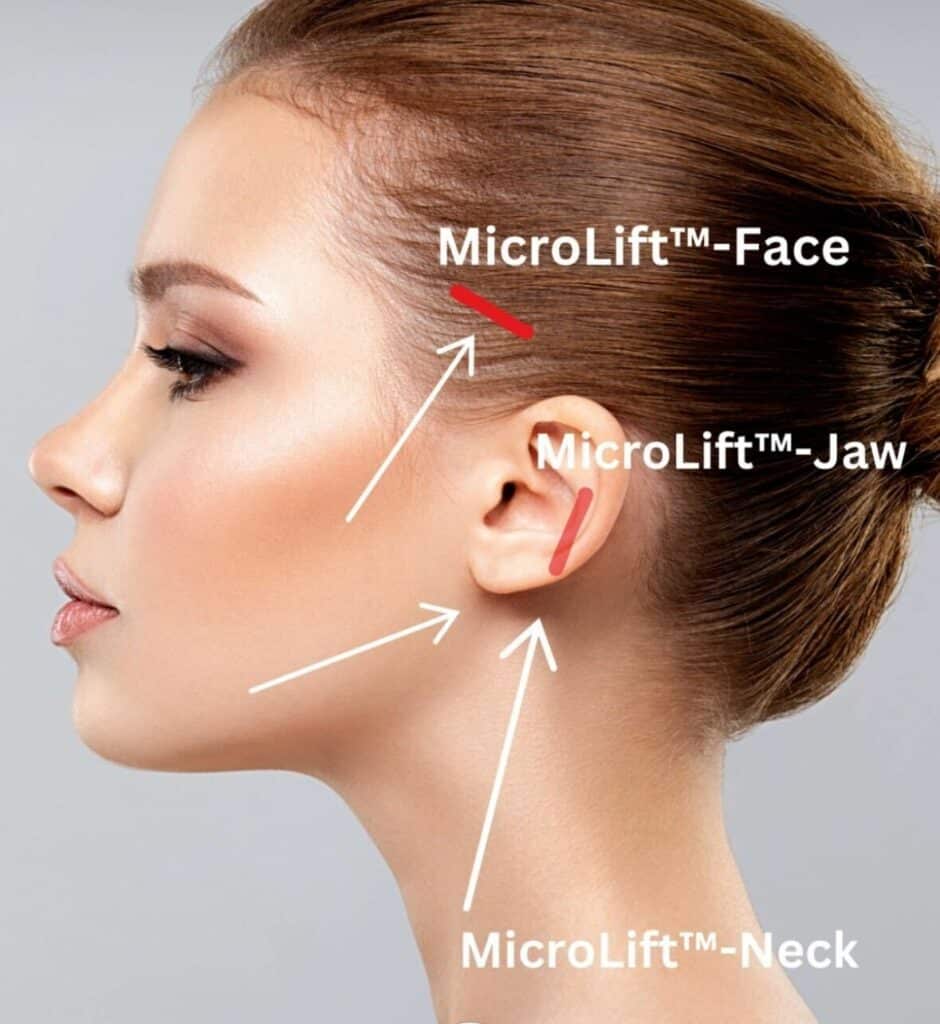
MicroRhinoplasty
This technique focuses on making precise adjustments to the nose to improve symmetry and overall appearance. Small incisions and specialized instruments can refine the nasal structure with minimal downtime.
Microlift-Face
Designed to address sagging and loss of volume in the midface area, the Microlift Face procedure involves making small incisions to lift and tighten the tissues. This approach provides a more youthful and refreshed appearance without the extensive recovery associated with traditional facelifts.
Microlift-Jaw
For those seeking a more defined and contoured jawline, the Microlift Jaw technique offers an effective solution. Making incisions behind the ears skillfully repositions and sculpts the tissues to enhance the jawline’s appearance.
Microlift-Neck
The neck often shows signs of aging, such as sagging skin and loss of elasticity. The Microlift Neck procedure addresses these concerns by lifting and tightening the neck tissues through small incisions behind the ear, resulting in a more youthful and refined neck contour.
Watch Dr. Miller Explain the Benefits of Microsurgeries
Book Your Microsurgeries Consultation
While microsurgeries offer numerous benefits, they still require the skill and expertise of a qualified and experienced surgeon. Patients should carefully research and consult with a board-certified facial plastic surgeon who specializes in microsurgical techniques to determine if these procedures are suitable for their individual needs and goals.
If you’re ready to take the next step in your aesthetic journey, book a consultation with double board-certified facial plastic surgeon Philip J. Miller, MD, FACS. As a renowned expert in microsurgical techniques, Dr. Miller has helped countless patients achieve their desired results with less downtime and natural-looking outcomes.
The Complete Guide to Neck Lift Cost in 2025 in NYC: Everything You Need to Know
A neck lift remains one of the most effective, long-lasting solutions to revitalize aging skin and restore a youthful, confident appearance. Determining the cost of this procedure is one of the first steps toward complete rejuvenation. In 2025, the average cost of neck lift procedures in New York City is a significant consideration for those seeking to enhance their appearance. This comprehensive guide will explore the average cost of various types of neck lifts and how they compare to previous years. We should also mention that these prices reflect national and local averages and do not necessarily match what you will see in our office. These treatments have a lot of variability, so you should consult with our doctor first.
Average Cost of Neck Lift Procedures in 2025
Average Cost of a Traditional Neck Lift in New York in 2025
Although not our specific prices, the average cost of a traditional neck lift in New York City in 2025 typically ranges from $15,000 to $70,000. However, it’s important to note that these figures can fluctuate due to various influencing factors. The price may be influenced by the surgeon’s level of expertise, the intricacy of the procedure, the geographical location of the practice, and the amenities offered.
Average Cost of a Mini Neck Lift in New York in 2025
The mini neck lift emerges as a compelling alternative for those seeking a less invasive option. In 2025, in New York City, individuals can expect to invest around $7,000 to $15,000 for a mini neck lift. This option often proves more economical than the traditional neck lift, primarily due to its streamlined procedure and reduced surgical duration. Dr. Miller’s proprietary MyEllevate procedure is a minimally invasive rival to a traditional mini neck lift, allowing patients to achieve dramatic results without general anesthesia or extensive downtime.
Average Cost of a Non-Surgical Neck Lift in New York in 2025
A non-surgical neck lift, also known as liquid neck lift, involves injectables and other non-invasive techniques rather than traditional surgery. While results are long-lasting, they’re still temporary. As a result, the average cost of a non-surgical neck lift in New York City hovers around $2,000 to $7,000—significantly less expensive than surgery, but also more frequent upkeep. This price range does not necessarily match our options because cost can vary based on the types and number of treatments used.
At his office, Dr. Miller also offers Neck-Tite™, which uses radiofrequency-assisted lipolysis (RFAL) technology to rejuvenate the neck and jowls which also influences the potential price range.
Average Cost of Neck Liposuction in New York in 2025
Neck liposuction, a procedure to remove excess fat in the neck area, is another option for those looking to rejuvenate their neck appearance. The average cost of neck liposuction in New York City in 2025 ranges from $4,000 to $9,000. The cost may be influenced by factors such as the surgeon’s expertise and the extent of liposuction needed.
Comparison of Costs with Previous Years
The costs of neck lifts in 2025 have risen in recent years, as the procedure continues to rise in popularity. Factors contributing to this increase include technological advancements, increasing surgical material costs, and higher demand.
Neck Lift Cost Breakdown: The Components of Neck Lift Pricing
The cost of a neck lift procedure consists of several elements, including:
- Surgeon’s fee. This fee includes the expertise and proficiency of the surgeon conducting the procedure. Surgeon fees may fluctuate based on their reputation, qualifications, and years of experience.
- Anesthesia fee. Anesthesia plays a crucial role in neck lift procedures, ensuring patient comfort and safety during surgery. The anesthesia fee is an integral component of the overall cost.
- Surgical facility fee. This fee encompasses the utilization of the surgical facility, encompassing expenses related to the operating room and essential equipment.
- Medication and post-surgery care. The overall cost includes expenses related to prescribed medications and post-surgery care, encompassing items like dressings and follow-up appointments.
Factors Affecting the Cost of a Neck Lift
Several factors influence the overall cost of a neck lift, including:
- Complexity of the procedure. The intricacy of the neck aging issues and the specific treatment areas directly impact the surgical complexity and overall cost.
- Surgeon’s experience and reputation. Surgeons with extensive experience and a strong reputation in the field may command higher fees due to their exceptional skill and proven track record of successful outcomes.
- Geographic location: The cost of living and the demand for cosmetic procedures within the dynamic setting of New York City can have a significant influence on the pricing of neck lift procedures in the region.
- Type of neck lift. Different neck lift techniques, such as traditional neck lifts, mini neck lifts, non-surgical neck lifts, and neck liposuction, come with varying costs.
Additional Costs to Consider
Some additional costs to consider for a neck lift procedure include:
- Consultation fee. Dr. Miller charges a $400 consultation fee, which is required upon scheduling. This fee can be applied to the final cost of your procedure. During the consultation, you will discuss your concerns and goals with Dr. Miller to develop a customized treatment plan.
- Preoperative testing. Some patients may require preoperative tests to ensure they are suitable candidates for surgery.
Financing Options and Insurance Coverage
With many flexible financing options to help patients achieve their aesthetic goals, Dr. Miller’s Manhattan office ensures that financial concerns do not stand in the way of attaining the desired results. Most plastic surgery procedures are considered elective and are not covered by insurance, but we offer patients two adjustable payment plans:
- CareCredit – offers patients the convenience and affordability of short and long-term financing options, without incurring interest charges.
- Alphaeon – presents an additional financing avenue specifically designed for visits and procedures performed by board-certified plastic surgeons. It extends the benefits of short and long-term financing, characterized by minimal to no interest and a low APR.
Patients always receive in-depth information about their desired procedures, their associated costs, and the array of financing alternatives at their disposal. This approach guarantees a smooth and worry-free journey toward realizing their cosmetic aspirations.
Cost vs. Quality: Choosing the Right Neck Lift Surgeon in New York
Prioritizing your surgeon’s expertise and experience over cost considerations alone is essential when considering a neck lift. Dr. Philip Miller stands as a distinguished choice for neck lift procedures in the dynamic landscape of New York City. His stellar reputation, coupled with his double board certification and glowing patient testimonials underscores his position as a top-tier option.
Choosing an experienced and adept surgeon like Dr. Miller significantly enhances the likelihood of attaining results that are both naturally appealing and enduring. Dr. Miller’s proprietary NatraLook® and Unified Vision™ processes further ensure that patients achieve outcomes that seamlessly blend with their unique features and stand the test of time.
While the cost of neck lift procedures in New York City in 2025 varies, contingent upon the specific type of the procedure and other individualized factors, Dr. Miller’s practice is committed to providing patients with transparent pricing, a comprehensive breakdown of costs, and flexible financing options.
Is a Neck Lift Right For You? Schedule a Consultation
If you’re ready to lift and tighten your neck for a fresher, more rejuvenated appearance, reach out to our office today and schedule a consultation with Dr. Miller. During the consultation, you can discuss your concerns, ask any questions you have, and gain guidance from one of the world’s most prominent neck lift surgeons. Contact us today and take the first step toward achieving Aesthetic Confidence™.
Facing the Future: Choosing Between Non-Surgical and Surgical Facelifts
Non-Surgical Facelifts
What Are Non-Surgical Facelifts?
Non-surgical facelifts are procedures designed to give your face a more youthful and refreshed look without invasive surgery. These treatments are the top choice for those who wish to address the tell-tale signs of aging — like fine lines, wrinkles, and a loss of skin elasticity — but aren’t ready to commit to the scalpel.
Common Techniques and Technologies Used
Non-surgical facelifts include many techniques, including:
- Dermal Fillers: These injectables restore volume and reduce wrinkles.
- Botox: This neuromodulator temporarily paralyzes muscles to smooth out fine lines.
- Laser Treatments: These treatments use laser energy to improve skin texture, tone, and overall quality.
- Microneedling: Also called collagen induction therapy, this treatment creates micro-injuries in the skin to repair damage and improve the appearance of wrinkles, acne scars, enlarged pores, and other skin concerns.

Benefits of Non-Surgical Facelifts
Non-surgical facelifts offer several advantages:
- Minimal Downtime: Patients can often return to daily activities immediately.
- Lower Risk: These procedures have fewer risks compared to surgical alternatives.
- Immediate Results: Many treatments provide instant improvements.
- Subtle and Natural-Looking Effects: Non-surgical methods often provide more subtle and natural-looking outcomes. This makes them ideal for individuals seeking enhancement without a drastic change in appearance.
- Customizable Treatments: The versatility of non-surgical procedures allows for a highly tailored approach to facial rejuvenation.
- Lower Overall Cost: These procedures are generally more affordable than surgical facelifts.
Limitations of Non-Surgical Facelifts
However, there are limitations:
- Temporary Results: These treatments often require ongoing maintenance.
- Subtler Changes: They may not address extensive sagging or deep wrinkles effectively.
- Limited Scope: These treatments are often focused on specific areas and may not provide the comprehensive facial rejuvenation some patients seek.
- Variability in Results: The effectiveness of non-surgical facelifts can vary greatly depending on the individual’s skin type, age, and the specific treatment used. This variability means that some patients may not achieve their desired results.
Duration of Results
The results typically last from several months to about two years, varying based on the treatment type and individual patient factors.
Popular Non-Surgical Procedures
Procedures such as the liquid facelift and laser skin resurfacing are in high demand due to their effectiveness and minimal invasiveness.
Surgical Facelifts
Varieties of Surgical Facelift Techniques
Surgical facelifts come in different types, each targeting specific aging concerns:
- Traditional Facelift: This classic technique is ideal for addressing moderate to severe sagging. It involves repositioning and tightening deeper tissues and removing excess skin, dramatically rejuvenating the face.
- Deep Plane Facelift: This approach goes deeper than a traditional facelift, targeting the deeper layers of facial structure. It provides a more comprehensive lift, particularly for those with pronounced facial aging.
- MicroLift: For those showing early signs of aging or seeking less invasive options, the MicroLift is an ideal choice. It’s a less extensive procedure, focusing on subtle lifting and tightening with minimal scarring and downtime.
- Revision Facelift: A revision facelift is designed for individuals who have undergone a previous facelift but seek further improvements or corrections. This technique requires a high level of skill and precision as it deals with changes made during the initial surgery and aims to refine or enhance the previous results.
Benefits of Surgical Facelifts
These procedures offer transformative results:
- Long-lasting Effects: Results can last up to a decade or more.
- Comprehensive Rejuvenation: Surgical facelifts can effectively address significant aging signs.
- Improved Facial Contours: Surgical facelifts can dramatically improve the contours of the face, restoring a more youthful and natural facial structure.
- Customizable to Individual Needs: Dr. Miller can tailor surgical facelifts to meet each patient’s specific needs and goals, allowing for a personalized approach to facial rejuvenation.
- One-Time Procedure: Unlike non-surgical options that require regular maintenance, a surgical facelift is generally a one-time procedure, eliminating the need for frequent treatments.
- Potential for Greater Satisfaction: Due to the dramatic and lasting results, many patients report higher satisfaction with surgical facelifts compared to non-surgical alternatives.

Longevity of Results
Surgical facelifts last for 10 years or more, making them a long-term investment in facial aesthetics.
Risks and Considerations
As with any surgery, there are risks such as scarring, infection, and reactions to anesthesia.
Common Surgical Risks and Complications
Potential complications include hematoma, nerve injury, and asymmetry, although they are rare with experienced surgeons like Dr. Miller.
Recovery Time and Post-operative Care
Recovery varies based on the procedure but typically ranges from two to four weeks. Post-operative care is essential for a smooth recovery and optimal results.
Which one is right for you?
Age and Skin Type Considerations
Your choice depends on various factors, including age, skin elasticity, and the extent of aging. Younger patients with mild signs of aging might prefer non-surgical options, while older patients with more pronounced sagging could benefit from surgical procedures.
Personal Goals and Expectations
Understanding your aesthetic goals is crucial. Non-surgical treatments offer subtle, temporary improvements, while surgical facelifts provide more dramatic, long-term changes.
Comparative Costs: Non-Surgical vs. Surgical
In New York City, non-surgical treatments generally cost less but may require repeated sessions. Surgical facelifts, while more expensive initially, offer long-term results, potentially making them more cost-effective over time.
Insurance and Financing Options
Cosmetic procedures are usually not covered by insurance. However, Dr. Miller offers flexible financing options, including CareCredit and Alphaeon, to make surgical and non-surgical treatments accessible.
Schedule a consultation with Dr. Miller in NYC
Choosing between a surgical and non-surgical facelift is a significant decision. Dr. Philip Miller, a renowned facial plastic surgeon in Manhattan, brings over two decades of expertise to guide you through this decision. He employs the NatraLook® process, ensuring a personalized approach that aligns with your aesthetic vision and lifestyle. In your consultation, Dr. Miller will discuss the procedures in detail, helping you understand what to expect and how each can align with your goals.
Contact Dr. Miller’s office today to schedule a consultation in his Manhattan, New York office. Whether you choose a surgical or non-surgical path, Dr. Miller is committed to providing exceptional care and results that enhance your natural beauty and confidence.